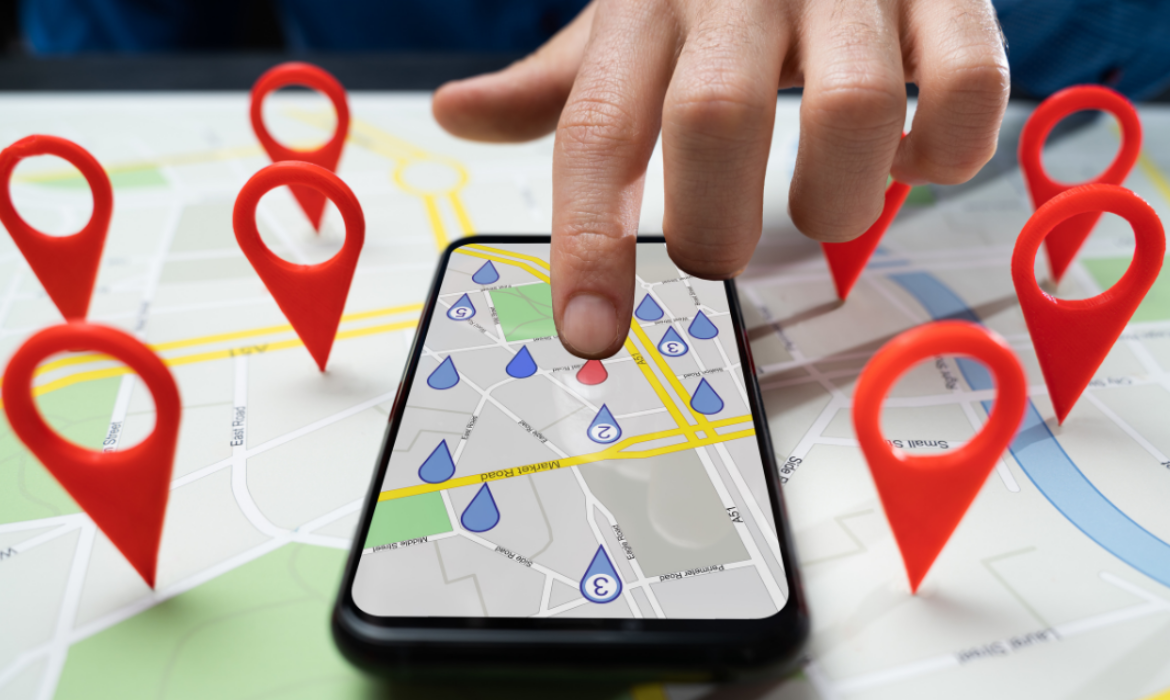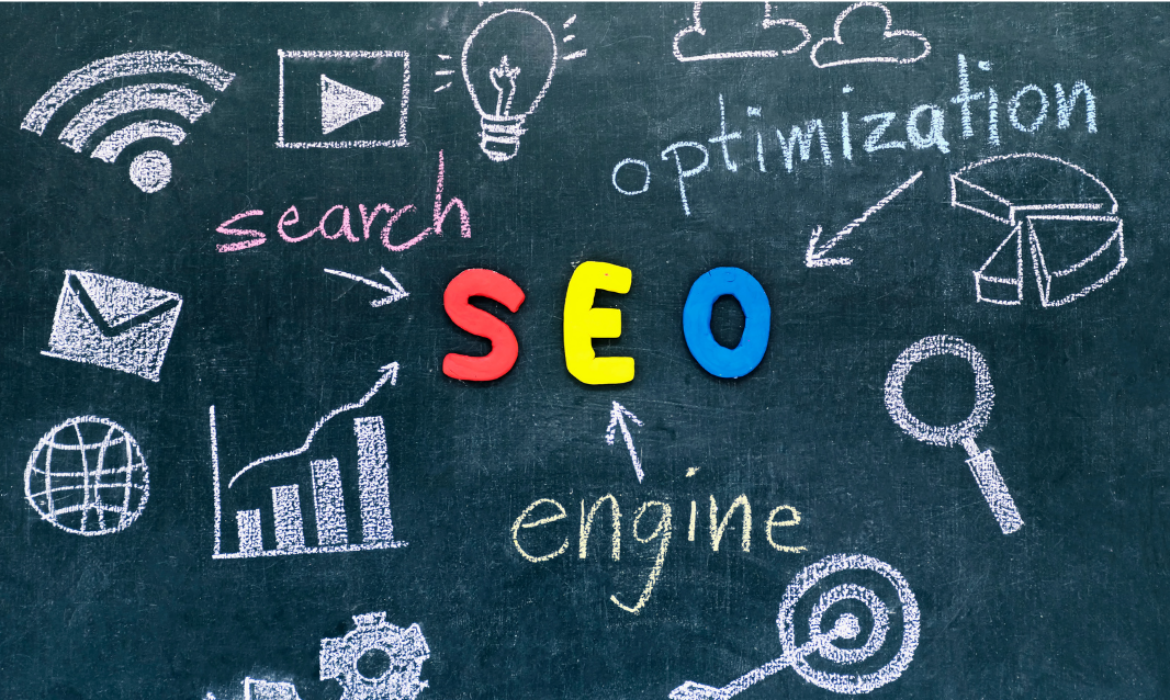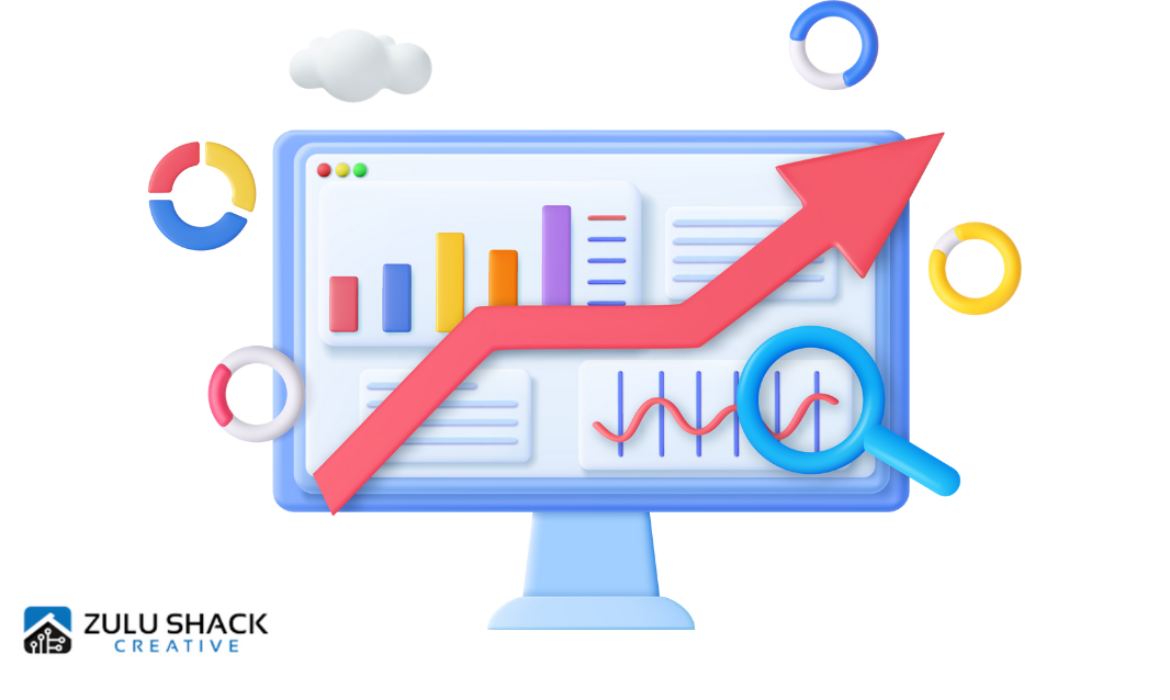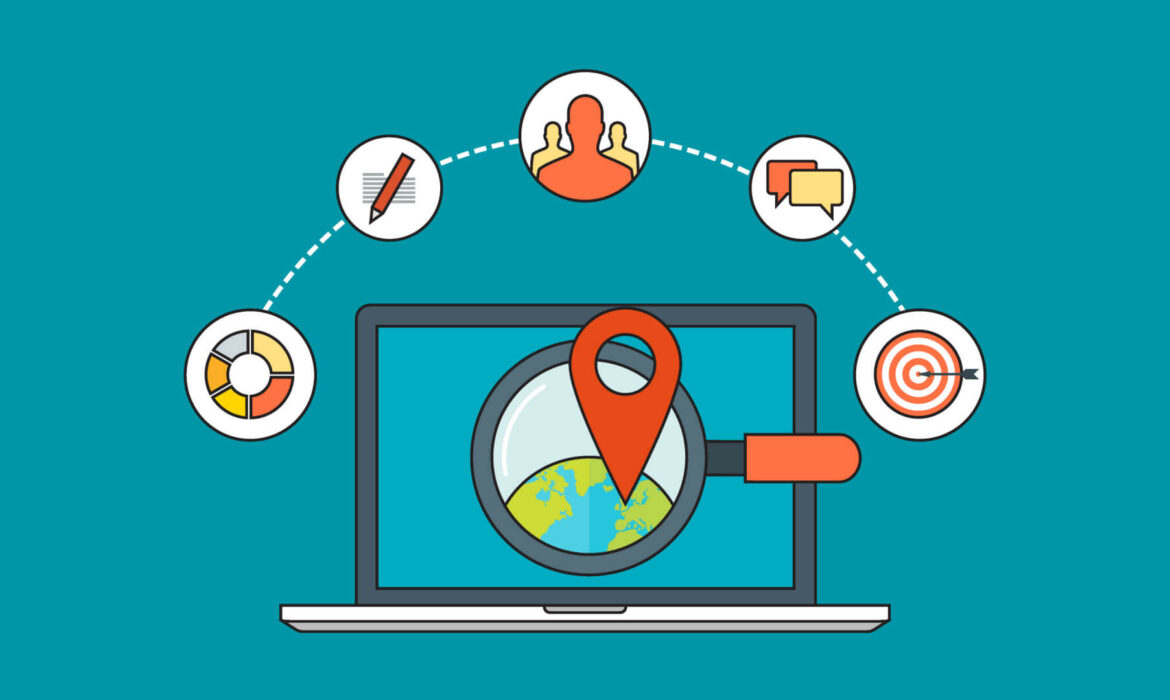Essential Guide to Search Engine Optimization for Financial Advisors
In a world where your next client is one Google search away, mastering search engine optimization (SEO) isn’t just a good idea, it’s vital.
If you’re a financial advisor trying to grow your practice, your website can either work for you or against you. This blog is your ultimate guide to getting found online, reaching prospective clients, and building a rock-solid digital presence.
A strong local SEO strategy helps you dominate your area, especially with a well-optimized Google Business Profile. SEO success isn’t a mystery, it’s about consistency, good tools, and avoiding common pitfalls.
Key Takeaways
1. Stop Competing on Broad Terms, Own the Niche Instead
Forget “financial advisor” go all in on long-tail keywords like “retirement planning for dentists” or “wealth advice for Gen X.” Why? They convert better, rank faster, and speak directly to your ideal client.
2. Local SEO Is a Growth Engine, Not a Checkbox
If your website isn’t fully optimized with keywords, reviews, Q&As, schema, call to action buttons, internal links, and damn good content, you’re leaving money on the table. Dominate your niche by starting with the basics and growing effectively.
3. Content Without E-EAT Is Just Noise & No One Will See It Or Care About It
If your blogs don’t show experience, authority, and trust, you won’t rank, and you won’t convert.
Real insights > generic advice. Add client stories, local references, and credentials that prove you’re the expert.
Why Should Financial Advisors Care About SEO?
Let’s kick things off with the basics.
Search engine optimization is the practice of making your website more attractive to search engines like Google, so it appears higher on search engine results pages (SERPs). [source]
When done right, it connects you to people actively searching for your services, such as retirement planning, investment advice, or help with budgeting.
Now, you might be thinking, “I’ve already got a website.” Great, but can anyone find it?
That’s where SEO for financial advisors comes in.
It’s about using specific keywords, crafting high-quality content, and building trust signals that boost your visibility to potential clients.
In the financial services industry, trust is everything. So is being seen as an expert. An effective SEO strategy helps position your brand as both.
Keyword Research and Planning
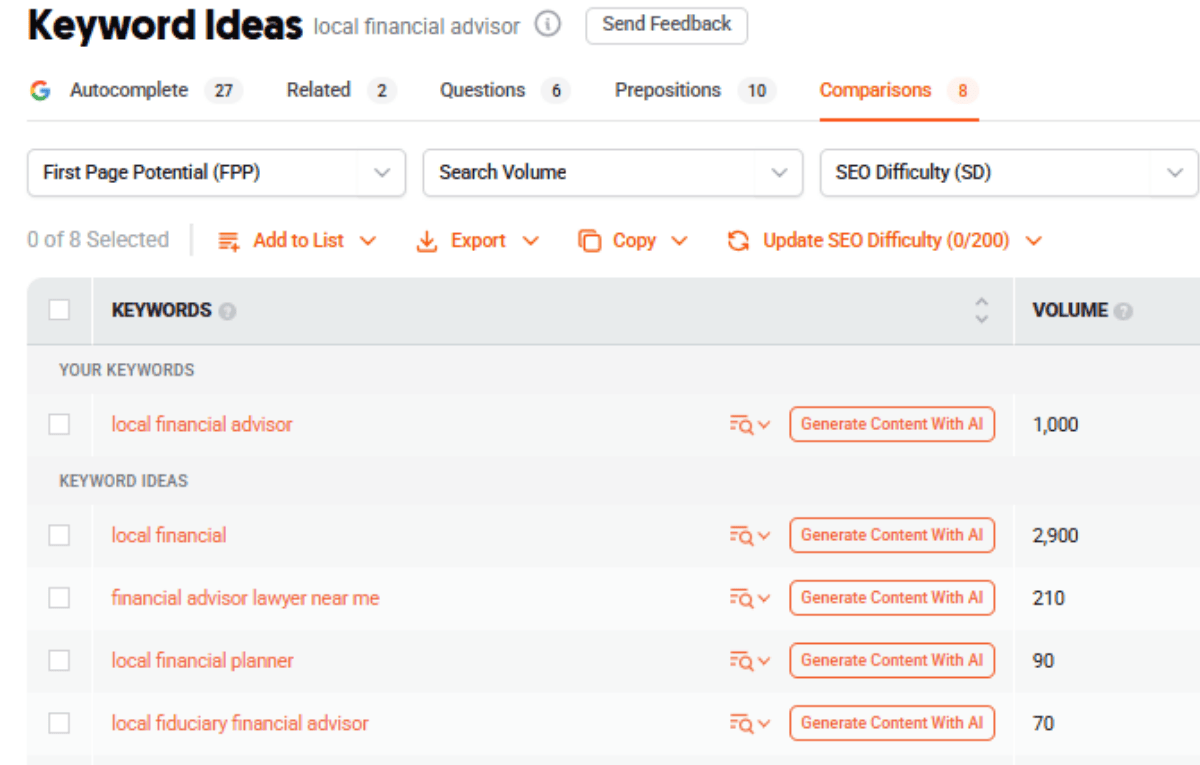
Here’s where the magic starts: keyword research.
You want to target relevant keywords that your prospective clients are actually typing into search engines.
For example, “best financial advisor for retirement planning” or “local financial planner in Florida”. These are called long-tail keywords, and they often convert better than broad terms.
Use the keyword research tools below to search for relevant keywords [source]:
✅ Google Keyword Planner
✅ Ubersuggest
✅ Ahrefs
✅ SEMrush
Don’t forget to look at search volume and keyword difficulty. You want terms with enough traffic, but not so competitive that you’ll never rank.
💡Bonus tip? Spy on what your competitors are ranking for and find gaps in their content strategy.
This stage forms the blueprint of your entire SEO efforts.
Get this wrong, and your content could be targeting the wrong audience entirely.
On-Page Optimization
Time to polish up what’s already on your site. This is called on-page SEO, and it includes things like:
✅ Adding your specific keywords into the page title, meta description, headers (H1, H2s, etc.), and image alt tags
✅ Creating valuable content that speaks directly to your audience’s needs
✅ Linking between your web pages to guide visitors (and search bots) around your site
✅ Using clear formatting, mobile-friendly design, and fast load speeds
Your website content should be built with humans in mind, but structured in a way that search engines can easily understand.
Every page should answer a question or solve a problem for your potential clients.
💡Pro tip: Creating content that is evergreen (always relevant) saves you time and continues to attract traffic over the long term.
Local Search Engine Optimization
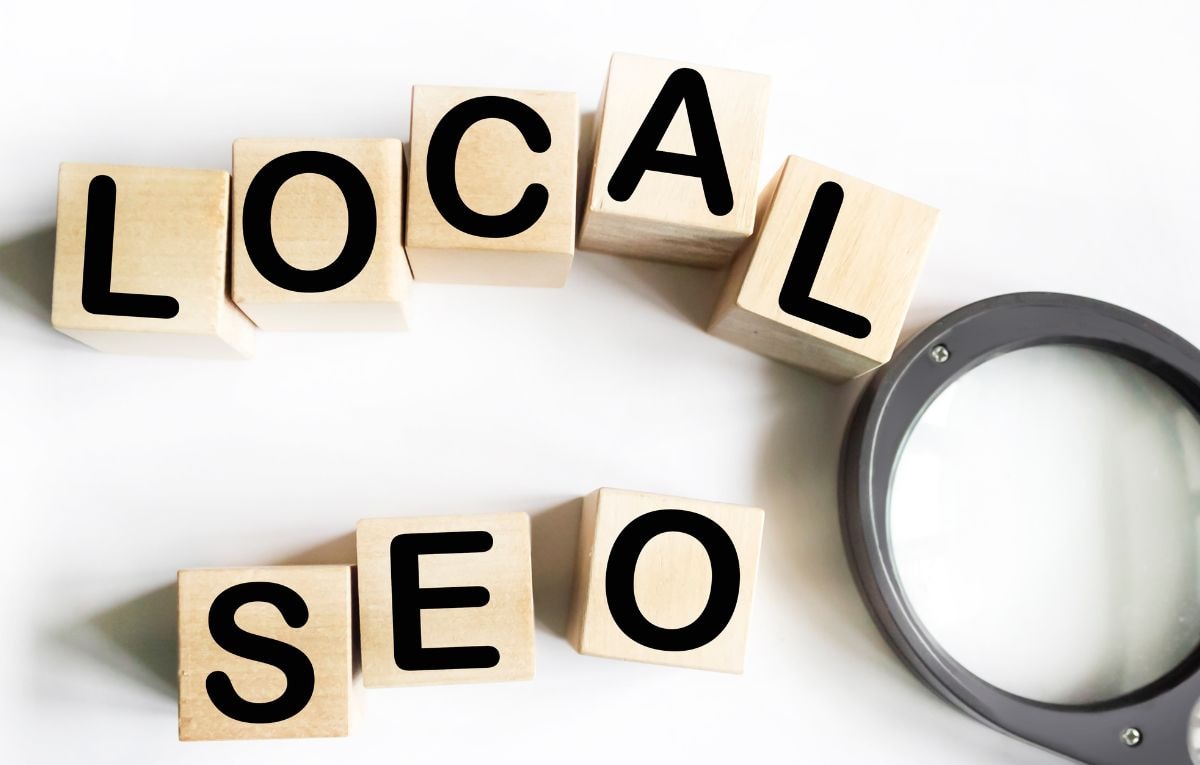
Local SEO is your best friend if you serve clients in a specific city or region.
Start by claiming and optimizing your Google Business Profile.
Add business hours, services, a strong description with relevant keywords, and ask happy clients to leave reviews.
Next steps:
✅ Use local search terms like “financial advisor in Orlando” or “wealth management firm in Miami”.
✅ Join local business listings and online directories.
✅ Write blog posts or guides that focus on regional financial news or advice.
Why is this important? Because when someone nearby types “financial advisor near me” into Google, you want to pop up in the local search results, not be buried under ten competitors. [source]
Technical SEO
This part sounds intimidating, but it’s mostly about user experience.
Technical SEO ensures that your website is healthy, crawlable, and speedy.
Google (and your visitors) love:
✅ Mobile-friendly design for mobile devices
✅ Fast-loading pages
✅ Secure websites with SSL (that little padlock in your URL)
✅ Clear navigation and internal links
✅ No broken links or duplicate content
Use Google Search Console to monitor your site’s health and track how well your SEO efforts are paying off.
It also helps you fix any technical issues that might be dragging down your search engine rankings.
Building Your Online Presence

Beyond your website, how visible are you online?
Building a strong online presence means showing up consistently in multiple places.
Here’s how to do it:
✅ Use social media to share valuable insights, blog articles, and industry news.
✅ Join Facebook groups or Reddit forums related to the financial services industry:
✅ Get featured on authoritative websites or contribute guest blog posts.
✅ Connect with other websites through backlinks (Google loves it when trusted sites link to you).
The more connected and active you are online, the more trust and authority you build in the eyes of both Google and your audience.
SEO for Financial Planning

Now, let’s talk specifically about SEO for financial planning.
If your financial advisory practice helps people plan for their future, you’ve got loads of SEO gold to work with.
Think about content like:
✅ “How much should I save for retirement at 40?”
✅ “Investment advice for young professionals”
✅ “Should I get a financial advisor before I get married?”
These are the questions potential clients are asking, and your website should be answering them.
Use specific keywords in your blog titles and page headers, and don’t forget about local SEO here, too.
Someone searching “financial planner in Key West” should find you on the first page of search results.
Creating high-quality content and building quality backlinks will boost your SEO rankings and help your practice attract qualified leads.
Measuring SEO Success
If you’re going to put effort into SEO, you’ll want to know what’s working. This is where tracking comes in.
Use Google Analytics to understand:
✅ Where your visitors are coming from
✅ Which pages they’re viewing
✅ How long they are staying
✅What actions they’re taking (e.g., filling out a contact form)
Pair that with Google Search Console to track:
✅ Which search terms you are showing up for
✅Your keyword rankings
✅Click-through rates from search engine results pages
SEO is a long game, but watching your progress helps you make smarter moves. Adjust your SEO strategy based on what the data tells you.
Avoiding Common SEO Mistakes
It’s easy to trip up when you’re starting out with SEO. Here’s what to avoid:
✅ Keyword stuffing, shoving your target terms into every sentence, is a big no-no.
✅ Using duplicate or thin content
✅ Ignoring mobile optimization
✅ Buying shady backlinks
✅ Skipping your meta description or not using a relevant page title
Stay updated on the latest trends. SEO consultants and blogs (like this one!) can keep you in the loop.
Remember: real, useful content for your audience will always win out over shortcuts.
Summary
Search engine optimization for financial advisors isn’t just a technical add-on. It’s how your financial advisory firm stands out online, attracts more qualified leads, and grows your business sustainably. Whether you’re just getting started or refining your current approach, the right mix of SEO services, content, and tracking can help you increase search engine results and reach the people who need your help.
Feeling Overwhelmed?
If all of the above has got you stressed, don’t panic, ZuluShack Creative is here to save the day. Our SEO services are designed to help financial professionals like you rise above the noise and rank where it counts. Let us take care of the technical stuff so you can focus on what you do best, providing top-tier financial advice.
Frequently Asked Questions
1. How long does it take for SEO to work for financial advisors?
Typically, you’ll start to see results in 3–6 months, but it depends on your industry, competition, and how much content you’re producing. SEO is a long-term game that builds momentum over time.
2. Should I use paid ads instead of SEO?
Paid ads can provide short-term traffic, but SEO for financial advisors offers a more sustainable and cost-effective way to attract potential clients over the long term. Ideally, both should be used in a balanced digital marketing strategy.
3. Is it worth hiring an SEO expert for my financial planning practice?
Yes, especially if you’re too busy to handle SEO yourself. A good SEO agency can build a tailored plan for your financial advisor business, help with keyword research, technical SEO, and monitor your progress.
4. What’s the best content to create for SEO?
Focus on blog posts, guides, and FAQs that answer your clients’ most common questions — especially those related to retirement planning, investment advice, and local search queries.
5. Do I really need local SEO if I offer virtual services?
Absolutely. People still use terms like “financial planner near me” even when searching for virtual advisors. Local SEO helps boost your presence in local search results, which can translate into qualified leads.
Mastering How to Rank in ChatGPT: 7 Essential Strategies for Success
The internet is changing, and so is the way people search. With AI platforms like ChatGPT on the rise, traditional search engines just aren’t cutting it anymore. But don’t stress, we’ve got your back. This guide will show you exactly how to rank in ChatGPT and stay ahead of the competition by using our digital marketing services.
ChatGPT answers questions directly, not with a list of links. However, links to brands are given, which is why today branded search is such a huge ranking factor compared to years ago.
Ranking depends on content relevance, quality, and clarity. Same as with humans.
Writing in natural language helps improve visibility in AI search results. You can see what Google thinks your page is about on its Natural Language API demo.
You need different SEO strategies for AI search engines. Its being called Ask Engine Optimization.
Key Takeaways:
- Understand How ChatGPT Ranks Content
Focus on user intent and write natural, relevant content that directly answers real questions. - Optimize Content with Structured Data
Use schema markup and maintain fast, mobile-friendly pages to help AI understand and surface your content. - Focus on Content Quality and User Needs
Create useful, scannable content with real value that solves problems and keeps users engaged. - Answer Questions the Way ChatGPT Does
Write in a conversational tone with clear formatting and actionable answers, like ChatGPT’s response style. - Use Smart Link Building (Without Spamming)
Earn trust by building branded and topical backlinks through high-quality guest posts and media mentions. - Build Engagement with User-Generated and Interactive Content
Boost dwell time and trust by encouraging user interaction through polls, comments, and community-driven content. - Promote Your Content with SEO and Content Marketing
Blend traditional SEO with AI-specific optimization to stay relevant in both search engines and generative platforms.
What Makes ChatGPT Different from Traditional Search Engines?

ChatGPT is an AI platform that gives direct answers to user queries, no link lists or endless scrolling required. It’s being referred to as a “generative engine” because it generates a response and not a list.
Unlike traditional search engines that throw a bunch of links your way, ChatGPT gets straight to the point. It pulls content from high-quality, relevant sources that AI systems or APIs from other search engines have indexed. [source]
This means ranking on ChatGPT isn’t your typical SEO game, it’s a whole new ballpark.
To rank here, forget about keyword stuffing and focus on creating content that genuinely matches user intent.
You need to be able to craft content that speaks naturally, answers questions directly, and give real value.
Let’s take a look at how you can do this.
1. Understand How ChatGPT Ranks Content
It’s All About User Intent and Relevance
To rank on ChatGPT, you need to think like the AI itself. (Welcome to 2025, where we are trying to think like the machine that’s trying to think like us).
ChatGPT’s mission? Reverse engineer user intent and deliver the most relevant content. Here’s what that means for you:
- Write content using natural language (keep it real).
- Focus on answering the user’s question clearly (no fluff).
- Use structured writing that flows like a conversation (make it easy to follow).
Forget the usual SEO rules. While traditional search engines like Google care about backlinks and page speed, ChatGPT’s all about content quality, relevance, and how well it nails user intent. [source]
So, make sure your content is not just good, but exactly what the user needs.
AI-Driven Answers Are Based on Content, Not Just Links
Unlike traditional search engines, ChatGPT isn’t all about backlinks or domain authority. Nope, it’s got a different set of priorities. Instead, it focuses on:
✅ Relevant material (keep it meaningful)
✅ Up-to-date content (nobody likes outdated info)
✅ Natural language processing signals (speak the language of the AI)
If your content is top-notch and genuinely solves user problems, you’re more likely to see it pop up in those shiny AI-generated responses. So, keep it fresh, keep it relevant, and keep it real.
2. Optimize Content with Structured Data
Add Structured Data and Schema Markup
Even though ChatGPT doesn’t crawl websites like Google does, structured data is still vital when AI platforms pull data from search engine results.
It’s like giving your content a roadmap to help AI systems find and understand it faster.
This is where schema markup comes in. Think of this as a backstage pass for your content. [source]
Schema helps your content get indexed by AI tools, making it easier for them to figure out what your page is all about.
The result? Your content gets seen and understood, making it more likely to show up in those AI-generated answers.
So, don’t skip this step, it’s the secret ingredient for better AI visibility.
Top Tip:
Add schema markup to blog posts, service reviews, and product pages to help AI-driven searches understand the context of your content.
Make Your Site Responsive and Fast
A responsive site with lightning-fast page speed doesn’t just make your users happy, it also gives you a big ol’ thumbs-up from both traditional search engines and AI platforms.
It’s like rolling out the red carpet for both your audience and the algorithms.
The faster and smoother your site runs, the better the chances of ranking higher, whether it’s Google or ChatGPT checking you out.
Speed matters so don’t let your site get stuck in traffic!
3. Focus on Content Quality and User Needs

Create Content That Delivers Real Value
The best way to rank on ChatGPT? Simple, create content that actually helps people.
Whether you’re answering a burning question or offering a solid solution, your content should always be focused on what the user really needs.
Here’s how to make it happen:
✅ Use clear headings and bullet points (nobody has time to read a wall of text).
✅ Write in natural language (keep it real, keep it friendly).
✅ Include multimedia content (images, videos, infographics) to keep things engaging.
If you nail these, you’ll be serving up content that’s not only helpful but totally irresistible to AI and your readers!
Structure for Easy Scanning
Want to take your content to the next level? Add some interactive components like dropdowns or tabs.
Not only will they boost engagement and keep users hooked, but they also make your content a breeze for AI tools to reference in those instant responses.
AI loves content that’s clear and structured, so when your content is organized with interactive features, you’re giving the AI exactly what it needs to pull your info quickly and effectively.
It’s like setting up a VIP lane for your content in the AI world!
4. Answer Questions the Way ChatGPT Does
Mimic the Conversational AI Format
Since ChatGPT loves to deliver answers in a friendly, conversational tone, you should be doing the same.
ChatGPT isn’t here for stiff, formal language, it wants the vibe to be casual and approachable, so your content is more likely to be included in AI-generated answers.
✅ Write clearly and conversationally (no keyword stuffing)
✅ Use concise intros, bullet points, and structured data
✅ Include original data, stats, and case studies
✅ Back everything with strong formatting and schema
Example:
Instead of saying:
“Social media marketing is a digital strategy used by businesses.”
Try:
“Wondering how social media can boost your business? It’s a simple yet powerful strategy used by thousands of brands every day.”
Include Real-Time, Actionable Content
Using real-time data and linking to authoritative sources makes your content more trustworthy.
When AI tools pull data for responses, they’re more likely to go for content that’s fresh, accurate, and credible.
So, if you want to be the go-to for AI-generated answers, keep it relevant and reliable!
5. Use Smart Link Building (Without Spamming)
Guest posting on high-authority sites is a killer way to boost your visibility and rank on ChatGPT.
You’re not just getting your name out there, you’re building credibility with AI platforms too.
Just make sure your posts are packed with relevant content and sprinkle in some brand mentions or links to your own material.
Target anchors: Include any word from your keyword
✅ Branded anchors: Your business/website name
✅ URL anchors: The actual link (naked URL)
✅ Topical anchors: Broader topic of your page
✅ Misc anchors: “Click here,” “this website,” etc.
The more AI sees you as a trusted source, the more likely it is to reference you in those sweet, AI-generated answers.
HARO is dead. Kind of.
We now use HARO, Qwoted, Featured, Help a B2B Writer, and Twitter alerts to get in front of journalists. [source]
Here’s how we build authority in 5 steps:
✅ Pre-written pitch templates tailored by niche
✅ AI + human hybrid to instantly rewrite for each query
✅ 3-sentence quote limit (clear, quotable, credentialed)
✅ Track all wins by author and publication for E-E-A-T
✅ Repurpose quotes into blog content + LinkedIn carousels
Result? Branded links. AI trust. And sometimes even podcast invites.
Instead of trying to compete with DR90 giants, we recommend going deep on one narrow slice of your niche. This gives you the highest chance of being pulled into AI Overviews or chatbot answers, even with a DR 30–40 domain.
Affiliate Sites
Affiliate sites are a goldmine for reaching new audiences, but don’t just throw your name on any random site.
Make sure they’re legit and align with your niche.
The right affiliate partnership can help extend your reach and boost your AI cred, so choose wisely and get your content in front of the right crowd!
6. Build Engagement with User-Generated and Interactive Content
Engagement Metrics Matter
Both AI search engines and traditional search engines keep an eye on how users interact with your content.
If people are sticking around, clicking, commenting, or sharing, it’s a clear signal that your content is hitting the mark and providing real value.
Boost Engagement By:
✅ Adding polls, quizzes, and surveys (who doesn’t love a little interaction?).
✅ Encouraging comments or user mentions (let’s get the conversation going).
✅ Highlighting feedback from niche communities (it’s all about those loyal fans).
User-generated content is like a golden ticket to boosting your brand’s reputation and visibility across AI-driven platforms.
The more engagement you get, the more AI takes notice, so make sure you’re giving your audience a reason to stick around and get involved!
According to Matt Diggity, AI users convert better. “AI-referred sessions average 10.3 minutes compared to 8.1 minutes from Google Search… AI users land on your site already primed with context.” [source]
7. Promote Your Content with SEO and Content Marketing

SEO isn’t dead – it’s just evolving.
To rank on ChatGPT and traditional search engines, you’ve got to mix the best of both worlds.
That means blending tried-and-true SEO strategies with fresh tactics tailored for AI platforms.
Traditional SEO Strategies Include:
✅ On-page optimization, which includes keyword research, content optimization, etc. (yes, they still matter).
✅ Off-page Optimization, which includes link building, social media marketing, and reputation management, etc. (don’t forget the basics).
Modern Tactics Include:
✅ Optimizing for AI search engines (AI is the future, after all).
✅ Ensuring conversational AI understanding (speak the AI language).
Keep Content Up to Date
Content that’s stuck in the past won’t cut it in today’s fast-paced digital world.
Regularly refresh old content with new stats, real-time data, and industry updates.
This keeps AI systems happy and signals that your content is fresh and ready to rank in those AI-generated responses.
Keep it current, keep it relevant, and you’ll stay ahead of the game!
Bonus Tip: Make Your Marketing Strategy ChatGPT-Friendly
To succeed in today’s digital marketing landscape, you’ve got to align your entire strategy with how people actually search.
That means crafting every blog post, service page, and product description with AI-readability in mind.
It’s not just about appealing to the algorithms; it’s about speaking the same language as your audience and the AI platforms that are now doing the searching.
Tips to Make Content ChatGPT-Ready:
✅ Break content into diverse formats like Q&As, how-tos, and checklists (keep it dynamic).
✅ Use conversational language and answer specific user queries (ditch the jargon, keep it friendly).
✅ Provide valuable insights, not filler content (AI knows when you’re fluffing it).
Summary
Ranking in ChatGPT goes beyond traditional SEO, it’s about understanding user intent and creating content that directly answers their needs.
As AI-driven platforms like ChatGPT continue to rise, adapting your content strategy is essential. Focus on natural language, structured data, and valuable insights to boost your visibility.
So, create content that genuinely solves problems and meets user needs, and you’ll be well on your way to ranking on ChatGPT and other AI-driven platforms.
Need help creating content that ranks on ChatGPT and other AI platforms? Our expert team knows exactly how to create content that not only drives results but also gets you noticed. Contact us today and let’s get things ranking!
FAQs: Ranking in ChatGPT and AI Search Engines
1. Which AI engines can you rank on?
You can rank content on several AI engines and generative search platforms — here’s a breakdown of the major players you should be optimizing for right now: ChatGPT (OpenAI + Bing API), Google AI Overviews, Perplexity.ai, You.com.
2. What is the difference between ranking in ChatGPT and traditional search engines?
Traditional search engines like Google and Bing rank based on backlinks and page speed. ChatGPT uses natural language processing and content quality to generate answers, focusing on user intent.
3. How do I make my content more likely to appear in ChatGPT answers?
Write clear, structured content using natural language. Answer specific user queries with relevant, up-to-date information and authoritative sources.
4. Does ChatGPT use SEO signals like backlinks or domain authority?
ChatGPT doesn’t rely on backlinks like traditional search engines. It values relevant, high-quality content that aligns with user intent.
5. Can AI tools like ChatGPT replace traditional SEO strategies?
No, but they change how we approach SEO. Focus on content quality and clarity to rank in both traditional search engines and AI systems.
What is GEO? Understanding Generative Engine Optimization
You’re putting in the work to create some top-notch content, but it’s not getting the visibility it deserves.
Just when you think things couldn’t get more complicated, AI driven search engines show up.
We get it. But this is the future of search engine optimization. This is the future of branding online. This is the future period.
AI-driven search engines are taking over, and your content can’t just check SEO boxes anymore.
It has to connect with how these AI systems understand, rank, and serve your content to users. It’s all about relevance.
That’s where Generative Engine Optimization (GEO) comes in!
Generative Engine Optimization (GEO) helps your content perform better with AI search engines.
It. It’s similar to ranking on traditional search engines, but not exactly the same.
In the blog below, we’ll answer your GEO questions, how it works, and why it’s becoming a game-changer in modern digital marketing.
Key Takeaways
- Relevance Engineering Over Traditional SEO – Brand Marketers should evolve into “relevance engineers,” focusing on:
- Information retrieval: How do AI search engines find your content and is it relevant to the user’s question? Does your website cluster content into categories and sections that are easy to understand, and how easy is it to read?
- NLP Content Strategy: You need to adopt a confident tone, provide citations, highlight relevant statistics, and ensure readability and clarity.
- Digital public relations (PR): Where can AI engines find your brand being mentioned?
- Structured Data as a Secret Weapon – Embedding key content within structured data formats, such as Schema.org, gives AI search engines the ability to extract and utilize information effectively.
- Embracing Generative Engine Optimization (GEO) – GEO involves tailoring content to be more accessible and valuable to LLMs by:
- Adopting an authoritative tone and providing citations
- Highlighting relevant statistics
- Ensuring readability and clarity
- Influencing Retrieval-Augmented Generation (RAG) Systems – RAG systems can be guided through “semantic trickle” by phrasing content in straightforward subject–predicate–object formats, making it easier for AI to extract meaningful information.
What is Generative Engine Optimization (GEO)?

Generative Engine Optimization (GEO) is about tailoring your content and website specifically for AI-driven search engines. Engines like Google AI Overviews, ChatGPT, and Perplexity.
At its core, GEO helps your content reach more people on more platforms so that more users come to your website. More traffic, more trust, more conversions.
GEO ensures your website isn’t just discoverable, but also well-represented by AI-powered engines that are shaping the future of search.
Recommended Tools and Tactics
- ZipTie: Tracks AI overview visibility across queries
- Profound: Monitors generative search presence
- CrUX + Core Web Vitals: Ensures pages are fast and indexable
- Schema.org: Implements rich structured data
- Google DOJ Documents: Provides insights into Google’s values and priorities
More and more people are using AI-driven search engines, which means that businesses must adapt their digital marketing strategies to include GEO. It’s not just the latest trend, it’s the future of search. Unlike traditional search engines, AI engines focus on contextual relevance.
Traditional search engines are changing… heck they’ve changed a lot in the past 12 months already. But they aren’t slowing down.
Unique Aspects of Generative Engine Optimization

✅ Built for AI comprehension:
Generative Engine Optimization (GEO) uses natural language processing (NLP) to structure content in a way that’s easy for AI to understand, summarize, and present.
✅ Goes beyond keywords & backlinks:
GEO prioritizes relevance, clarity, and trustworthiness over keyword density. You have to prove that you can be trusted through content quality, citations, statistics, sources, authorship, and real Subject Matter Expert insights.
✅ Optimizes for synthesis, not just rankings:
Rather than optimizing solely for SERP position, GEO ensures your content is the kind that AI systems pull into their AI generated responses.
✅ Blends SEO + GEO for maximum reach:
The best strategies combine traditional SEO techniques like keyword research with GEO’s adaptability, ensuring your message gets seen, clicked, and trusted by both people and AI.
As AI-generated search continues to rise, GEO helps ensure your content remains competitive, discoverable, and aligned with evolving user behavior. And hey, that’s exactly what we want.
GEO In The Wake Of The Search Engine Volume Drop

Gartner predicts that search engine volume will drop by 25% by 2026. All thanks to AI chatbots and other virtual agents.
As users are flocking to platforms like ChatGPT, Perplexity, and Google AI Overviews for direct and comprehensive responses. So what? Well that means your content needs to be optimized not just for humans, but for how machines read, retrieve, and respond.
✅ GEO ensures your brand remains visible and trusted in an AI-first world.
✅ It helps your content become the source AI models quote, summarize, and surface.
✅ And it builds a stronger, smarter brand presence, wherever your audience asks questions.
💡 Leading digital marketing agencies are already shifting strategies, building content with GEO principles to thrive in this new search landscape.
If you want your content to shine where search is heading, GEO is the strategy to bet on.
The Natural Evolution of GEO

1. From Keywords to Concepts
- SEO focused on matching keywords to user queries.
- GEO focuses on matching concepts and context to AI model outputs.
Instead of asking, “What keyword do I want to rank for?” GEO asks, “What’s the best way to teach an AI to use my content as the answer?”
2. From Pages to Passages
- SEO traditionally optimized whole pages.
- GEO methods optimize semantic chunks (passages of 50–150 words) so that large language models (LLMs) can easily extract information.
Think: clear headings, concise answers, and logical flow. Every paragraph matters.
3. From SERPs to AI Overviews
- SEO lived and died on blue links in the Search Engine Results Page (SERP).
- GEO competes for inclusion in AI Overviews and generative answer engines like:
- Google SGE
- ChatGPT
- Perplexity
- Bing Copilot
In GEO, your content isn’t just trying to rank, it’s actually trying to be quoted or cited in AI’s response. That’s a whole different ball game.
4. From Optimization to Relevance Engineering
- SEO was about relevant keywords, structure, tags, and links.
- GEO is about training LLMs to recognize your content as trustworthy, structured, and useful.
This includes:
- Structured data (schema)
- Subject-matter expertise
- Cited sources
- Conversational tone with depth
So, What Do You Do Differently With GEO?
- Create AI-friendly content that uses clear subheadings, concise answers, and structured formats.
- Use E-E-A-T principles aggressively (Experience, Expertise, Authoritativeness, Trust).
- Focus on brand search volume and entity recognition.
- Monitor your presence in AI tools, not just in Google SERPs.
- Publish content that AI models want to reference, not just humans.
GEO vs. Traditional SEO: Key Differences
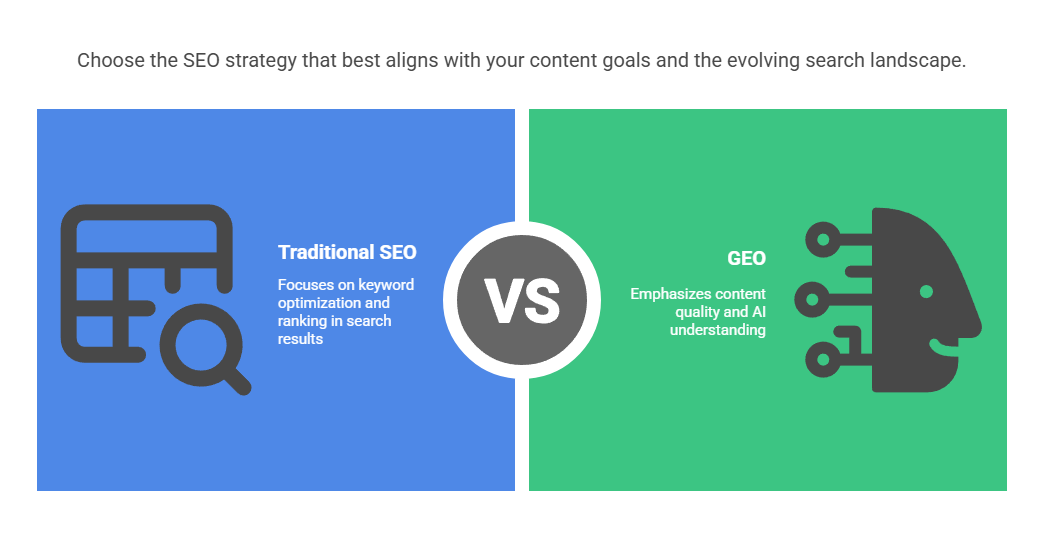
GEO ensures your content is picked up and used by AI-driven tools, not just trying to rank higher in traditional search results. [source]
The focus is on optimizing content for AI-driven search engines like Google AI Overviews, ChatGPT, and Perplexity. You wouldn’t do the same things to boost your rankings as you would with traditional SEO, but they are quite similar.
It emphasizes the quality of your content and how it’s structured. It’s less about playing to the AI algorithms and traditional search engine formats and more about making your content easy for AI to understand and use.
GEO is designed for the new wave of AI-powered searches that don’t just list links – they pull together information from multiple sources and deliver it to intended audiences effectively as AI generated results.
Traditional SEO practices focus on optimization strategies like keyword placement.
GEO vs. Traditional SEO: Key Similarities
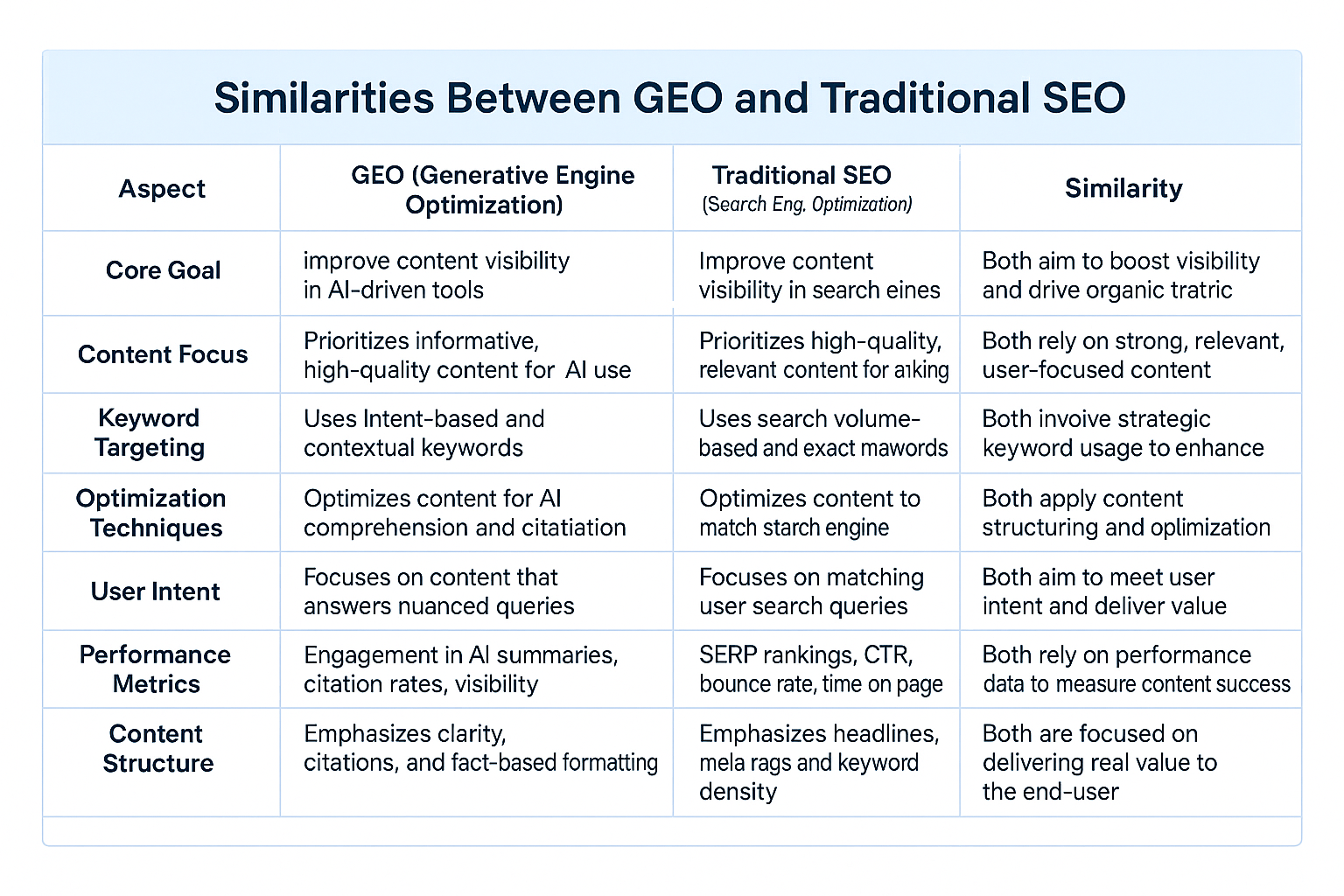
Both SEO and GEO are focused on the same big goals: getting your content seen and engaging your audience.
Both approaches rely heavily on unique, relevant content because quality matters.
And that’s the case whether you’re optimizing for AI tools or traditional search engines. It’s all about creating content that meets user expectations and delivers real value. It’s as simple and as difficult as that.
Both also use similar techniques, like keyword targeting and content creation optimization, to improve search rankings.
Traditional SEO tracks keyword performance, is more focused on search volumes and impressing search engine algorithms. On the other hand GEO focuses on helping AI-driven tools understand and use your content effectively.
So, whether you’re going the SEO route or diving into GEO, you’re ultimately working toward the same thing: boosting your website’s visibility and driving more organic traffic.
How Generative AI Engines Work

- Massive Data Training – Generative AI models like ChatGPT and Gemini are trained on vast datasets, powering AI-powered search engines with data from books, articles, and websites.
- Pattern & Context Recognition – AI learns language patterns, improving organic search metrics by providing natural, relevant responses based on context.
- Multi-Source Input – These search technologies pull information from diverse sources and structured data, boosting organic search traffic by delivering accurate and comprehensive responses.
- Powered by Large Language Models (LLMs) – LLMs use machine learning techniques like transformers, helping AI-powered search engines generate relevant, high-quality content.
- Contextual Understanding – AI understands word relationships in context, enhancing organic search metrics by providing human-like comprehensive answers.
- Input Encoding & Output Decoding – User input is processed into structured data, improving SEO and organic search traffic expected through optimized content generation.
- Intelligent Synthesis – AI synthesizes information across multiple sources, creating concise, relevant content that drives other organic search metrics.
- User Intent Matching – AI aligns responses with user behavior and search intent, essential for GEO strategies and improving organic search metrics.
- Search Behavior Influence – As AI understands user needs better, it reshapes organic search and content visibility, boosting search traffic.
- Human-Centric Output – The goal is to generate human-centric content that aligns with user expectations, improving organic search metrics and engagement.
Measuring GEO Performance

To gauge how well your content is performing in AI-driven search results, focus on these indicators:
- Visibility in AI Responses – Monitor how often your content appears in AI-generated answers.
- User Engagement Post-Referral – Assess how users interact with your site after arriving via AI platforms.
- Brand Authority Perception – Evaluate how AI-driven platforms perceive your brand’s authority.
- Utilizing UTM Parameters for AI Traffic – Implementing UTM parameters helps track the source of your AI referral traffic.
- Establishing Benchmarks and Continuous Monitoring – Set initial benchmarks for these metrics and regularly compare them against industry standards.
Future Of Generative Engine Optimization
As AI-driven search engines evolve, search engine optimization tactics like keyword stuffing are becoming less effective. The rise of generative AI has led to a significant shift in how content is created and consumed. According to McKinsey, 65% of organizations now regularly use generative AI, nearly double the adoption rate from the previous year.
The future of GEO lies in continuous adaptation and innovation. By embracing the capabilities of generative AI and aligning content strategies with the evolving landscape, businesses can ensure their content remains visible, relevant, and impactful in AI-driven search results.
As AI and answer engines continue to dominate search engine results pages (SERPs), integrating GEO strategies into your digital marketing strategy is important for staying competitive in an increasingly AI-powered world.
Frequently Asked Questions
How does GEO differ from traditional SEO?
GEO differs from traditional SEO by focusing on content quality and structure for AI platforms, aiming to meet user intent and create better conversational experiences, not just target keywords.
Why is GEO important in modern search?
GEO helps AI platforms deliver more relevant, personalized results by considering location, context, and user intent, ensuring accurate, timely responses.
What are some key strategies for optimizing content for GEO?
To optimize for GEO, use structured data, authoritative content, and language that aligns with AI models, boosting visibility, engagement, and relevance to user intent.
How can I measure the performance of my GEO efforts?
Track GEO performance by monitoring AI visibility, post-referral engagement, brand mentions, and UTM-tagged traffic, ensuring your content meets user intent via AI and answer engines.
5 Strategies to Improve Your Google Rating in 2024

In the vast landscape of the internet, where billions of websites compete for attention, mastering the art of Google ranking is essential for standing out. Google is not able to judge content the way you and I do; it’s a meticulously designed algorithm fueled by code and mathematics. Understanding how this digital behemoth operates is the first step towards optimizing your content and climbing the search result ladder. So, it’s time to dive into the actions and strategies that will help you with your search engine optimization in 2024. Buckle up!
For additional information on services or advice relating to Search Engine Optimization (SEO), web development, and app building, be sure to check out Zulu Shack’s main site!
Key Takeaways:
- Google’s assessment of content quality encompasses various aspects, including relevance, authority, user experience, engagement metrics, freshness, structured data usage, and accessibility standards adherence.
- Google utilizes metrics like bounce rate and time spent on page to gauge user satisfaction with content. While these metrics are important, they’re not always definitive indicators, and Google’s algorithms consider multiple signals for accurate judgments.
- To enhance content visibility on Google and ultimately increase your Google ranking, focus on user intent, incorporate key takeaways for quick understanding, optimize readability, include clear calls-to-action, prioritize site speed, and utilize relevant keywords in titles and descriptions.
How Does Google Determine Quality Of Content?

Google’s primary mission is to cater to the needs of its users. Every tweak to its algorithm aims to enhance the search experience by delivering the most relevant and valuable content. Consequently, to boost your Google ranking, you must align your content with the user-centric criteria that Google values.
Naturally, this leads us to the question: what user-centric criteria and algorithms does Google use exactly? Google uses a variety of algorithms and methods to determine if the content on the web is high quality. While the exact details of these algorithms are proprietary and not disclosed by this search engine, they generally aim to assess the relevance, authority, and user satisfaction of content. Here are some factors that Google considers:
- User Interaction
- Website Authority
- Goal Delivery
- Informational Queries
- Quick Calls-to-Action
- Click-Through Rates
Google’s ranking methodology centers around analyzing user interaction to assess content relevance and usefulness. Crafting resonant content that promptly fulfills audience needs is vital. To ascend in Google’s ranking hierarchy, your content must also prioritize goal completion. You can entice users with intriguing titles and concise descriptions, which will increase the likelihood of clicks and enhance your visibility on Google.
Whether it’s answering a query, providing information, or offering a solution, clarity and conciseness are paramount. Google also considers user experience factors like page loading speed, mobile-friendliness, and ease of navigation, while avoiding intrusive ads. These elements contribute to a website’s authority, along with backlinks from reputable sources.
To enhance your site’s ranking, prioritize accurate, comprehensive, and original content. By strategically placing quick call-to-actions (CTAs) throughout your content, you can streamline the user journey and encourage goal completion. Furthermore, prioritize optimizing site speed. A seamless and responsive browsing experience not only enhances user satisfaction and increases click-through rates but also positively influences your Google ranking.
In the intricate ecosystem of Google ranking, mastering the nuances of user interaction and optimization techniques is essential for success. By prioritizing user satisfaction, delivering valuable content, and optimizing for engagement, you can elevate your Google ranking and establish a formidable online presence. The key to success: Embrace the algorithms, understand the metrics!
If you’re new to SEO, I’d highly recommend reading the following blog where you can delve deeper into link-building, backlinks, and some of the other terms discussed in this blog.
What Does Google Consider Bad-Quality Content?
Now that we understand what Google considers high-quality content, it’s time to ask the latter: What does Google consider bad-quality content? In other words, we need to understand what Google deems as bad-quality content to ensure we avoid potential pitfalls that could harm our website’s ranking. Examples of the following include:
- Thin Content
- Keyword Stuffing
- Duplicate Content
- Spammy Links
Thin content, which lacks substance and offers little value to users, does not contribute to goal completion by any means–it actually does the opposite. More so, keyword stuffing, another frowned-upon practice, involves overloading content with keywords to manipulate search engine rankings. Lastly, replicating content from other sources without adding value and including links to unrelated or spammy websites solely for ranking purposes, or presenting different content to search engines than what users see are all frowned upon. To maintain a positive reputation with Google and improve your website’s ranking, it’s essential to focus on creating high-quality, user-centric content that prioritizes relevance, value, and authenticity while adhering to Google’s quality guidelines.
If you’re new to SEO, I’d highly recommend reading the following blog where you can delve deeper into key terms discussed in this blog, as well as learn the proper etiquette and unspoken rules of SEO.
5 Actionable Steps to Improve Your Google Ranking:

Now that we’ve established a basis of understanding, a series of do’s and don’ts, we can finally delve into the five actionable steps that you can take today to enhance your site’s Google ranking and establish a strong online presence. From optimizing on-page elements to creating high-quality content and building authoritative backlinks, these strategies will empower you to elevate your site’s SEO performance and achieve lasting success in the competitive digital world.
(1) Optimize On-Page SEO: Enhance your website’s visibility in search results by optimizing on-page elements such as titles, meta descriptions, headers, and URL structures. Incorporate relevant keywords naturally throughout your content and ensure it is well-structured and easy to navigate. Additionally, optimize images with descriptive alt tags to improve accessibility and keyword relevance. To learn more about creating a professional and successful website, make sure to read our blog on web design!
(2) Create High-Quality Content: This step cannot be emphasized enough! Creating high-quality content is the number one way to improve your SEO and online presence. Produce engaging, informative, and valuable content that addresses the needs and interests of your target audience. Focus on providing solutions, answering questions, and offering unique insights to establish your site as a reputable source of information. Regularly update your content to keep it fresh and relevant, and aim for a good balance of text, images, and multimedia elements to enhance user engagement. For more tips on outlining and creating quality content, be sure to check out this article here!
(3) Build Quality Backlinks: Earn backlinks from authoritative and relevant websites within your industry or niche to improve your site’s credibility and authority in the eyes of Google. Focus on obtaining natural and organic backlinks through guest blogging, outreach campaigns, and networking with influencers. Avoid low-quality or spammy backlinks, as they can have a negative impact on your ranking.
(4) Improve Website Speed and Performance: Enhance user experience and reduce bounce rates by optimizing your website’s speed and performance. Compress images, minify CSS and JavaScript files, enable browser caching, and utilize content delivery networks (CDNs) to speed up page loading times. Mobile optimization is also crucial, as Google prioritizes mobile-friendly websites in its ranking algorithm.
(5) Monitor and Analyze Performance: Regularly track your site’s performance using tools like Google Analytics and Google Search Console to identify areas for improvement and track progress over time. Monitor key metrics such as organic traffic, bounce rate, average session duration, and keyword rankings to gauge the effectiveness of your SEO efforts. Use this data to refine your strategy, address any issues, and capitalize on opportunities to further enhance your site’s Google ranking.
By implementing these actionable steps consistently and strategically, you can improve your site’s visibility, attract more organic traffic, and ultimately boost your Google ranking. Remember that SEO is an ongoing process, and staying informed about algorithm updates and industry trends is essential for long-term success.
Full Summary:
Mastering the intricacies of content quality evaluation by Google is paramount for any website aiming to excel in today’s digital landscape. By grasping the multifaceted factors that contribute to content assessment, from relevance and authority to user experience and engagement metrics, websites can refine their strategies to meet Google’s standards effectively. Moreover, recognizing and avoiding practices that lead to low-quality content is essential for maintaining credibility and relevance in the eyes of both users and search engines. With a clear understanding of these SEO practices and a commitment to delivering valuable, user-centric content, websites can position themselves for sustained success and increased visibility in Google’s search results.
You too can succeed in achieving a high Google ranking by implementing these proven strategies and guidelines. By focusing on delivering valuable, user-centric content and adhering to SEO best practices, you can enhance your website’s visibility and attract more organic traffic. With dedication and perseverance, you can elevate your online presence and reach a wider audience, ultimately driving growth and success for your website or business.
Frequently Asked Questions
Is it true that Google penalizes websites for excessive monetization or pushy calls to action?
Contrary to common belief, Google doesn’t necessarily penalize websites for monetization efforts or assertive calls to action. Many e-commerce websites rank highly in SERPs despite employing such tactics. However, balancing monetization with providing valuable content and a positive user experience is essential.
How important is user intent in Google’s ranking criteria?
User intent plays a crucial role in determining content quality from Google’s perspective. Content that effectively satisfies user queries and provides valuable information aligned with user intent is more likely to rank well. Therefore, understanding and addressing user intent is essential for SEO success in 2024.
What are the key factors Google considers when determining content quality?
Google evaluates content based on relevance to the search query, authority of the website or page, user experience factors like page loading speed and mobile-friendliness, content quality including accuracy and originality, engagement metrics such as click-through rate and time spent on page, freshness for timely topics, structured data usage, and accessibility standards adherence.
How does Google identify bad-quality content?
Google assesses user satisfaction by analyzing interaction metrics like bounce rate and time spent on page. If users quickly return to the search results after visiting a page, it may signal dissatisfaction. However, this isn’t always definitive, as some users might find what they need quickly and exit, so Google’s algorithms consider various signals to make judgments.
What strategies can I use to improve my content’s ranking on Google in 2024?
To enhance content visibility on Google, focus on goal completion, incorporate key takeaways for quick understanding, optimize readability with font styling, include clear call-to-actions, not overly worry about bounce rate, avoid clickbait titles, prioritize site speed, organize content with a table of contents, and utilize relevant keywords in titles and descriptions.
The Top 7 SEO Tools Every Local Business Needs in 2024
In certain professions, relying solely on your individual resourcefulness, physical prowess, or drive may suffice; however, search engine optimization(SEO) and digital marketing do not fall into that category. In this industry, success often hinges on a combination of strategic thinking, technical skills, and adaptability, making it essential to leverage specialized tools and resources. At this point you may be asking yourself: As a local business owner, how will I be able to achieve my online marketing goals without the experience and technical knowledge of professionals? Great question! Well, out of the dozens and dozens of options out there, I’ve devised a list of user-friendly and helpful SEO tools that I think are the best for helping local businesses achieve their online marketing goals.
What is an SEO Tool?
To start, let’s make sure we understand what SEO tools actually are. An SEO tool can be defined as a software or online platform designed to improve some aspect of search engine optimization, such as online visibility and ranking on search engines like Google. Widely used by online marketers and SEO professionals, SEO tools offer a range of features that serve various purposes, such as search query analytics, reporting automation, content optimization, website performance analysis or audits, and so much more.
What Makes a Good SEO tool?
As a local business owner, your time and resources are finite. Thus, it is clear that you are in need of an easy and effective SEO tool, but what exact characteristics make an SEO tool “good” or useful? What makes a “good” SEO tool for your business may differ from what would be considered a “good” SEO tool for professional SEO marketers, let’s say; however, there are some basic parameters we can use to determine the value of SEO tools. If you are unsure if a SEO tool is right for your business needs, ask yourself if the following characteristics are existent: (1) SEO-centric functionality, (2) value, (3), user-friendly, (4) integrated platforms. Now, what does this all mean? SEO-centric functionality means that every SEO tool should have an element that relates back to search engine optimization. This is step one–if your SEO tool of choice does not actually relate to any elements of SEO (i.e. keyword analysis, audit tools, on-page performance assessment, competitor analysis, etc.), you should probably look for another option. Secondly, if your SEO tool of choice requires a subscription, does the price equate to the quality of the product and its services? In this blog, I will offer some SEO tools that are free; however, the majority are not, so it is important to be able to properly gauge if the tools offered are extensive and comprehensive enough to warrant the subscription price. Although it ranks third on the list, this characteristic holds significant importance nonetheless. User experience and friendliness should be of your top considerations for SEO tools. Keep in mind that there will be a learning curve with all of the below noted SEO tools–as there is for everyone, SEO professionals and local business owners alike–but that learning curve should be relatively low so users are able to access features they need, as well as seamlessly integrate these tools into their performance1. Lastly, a key characteristic of a good and useful SEO tool is its ability to be integrated into other software products. To further elaborate, users should be able to integrate the offered SEO tools and features into their common-place business platforms that already exist, such as platforms relating to tasks like meetings, reporting, scheduling, and customer management.
The Top 7 SEO Tools for Local Businesses in 2024:
The following list was curated with the local business in mind. The listed SEO tools have been chosen because they are user-friendly and easy to navigate, with a minimal learning curve and no technical skills required. Also, keep in mind that in order to see meaningful progress via these SEO tools, there should be continuous effort put forth and monitoring in place to ensure long-term improvement in your business’s SEO2. Remember, a SEO tool is only as great as the effort you invest in utilizing it effectively. With that being said, let’s take a look at my top ranking SEO tools for local businesses in 2024:
- Google Search Console
Coming in first place is Google Search Console (GSC), previously known as Google Webmaster Tool. GSC is a free web service that allows for improved SEO, so while it does not technically fall under the definition of SEO tools, this Google service is excellent for optimizing your website’s visibility and traffic flow. This service will allow you to understand how Google is interacting with your site, which if you are at all familiar with SEO, you know that Google’s interaction and ranking of your website is key to successful SEO. Features of this free web service allows you to receive alerts about indexing and spam issues, check search queries, identify page errors or broken links, and overall optimize the visibility of your website. While Google Search Console lacks some of the more robust and advanced features of other SEO tools, it acts as a great starting point and introductory for local businesses trying to improve their SEO.
- Google Ads Keyword Planner
While this tool is also not technically considered an SEO tool, its utilization and application directly impact one’s search engine optimization performance. A big aspect of SEO is keyword research, which can be defined as the process of identifying and analyzing the words and phrases that people use when searching for information, products, or services on search engines like Google. To simplify, if your site keywords are not specified to that of your target audience, your site will not appear in the search results when users are searching for your specific good or service, which results in minimal to no site traffic. Enter, Google Ads Keyword Planner. This free web service is so easy to use! You simply plug your site URL into the search engine and Google will present you with tons of suggested keywords based on your URL. You can then begin to integrate some of those keywords into your site–it’s as simple as that!
- Google Analytics
How shocking! Another free Google web service to improve your SEO. You will quickly learn that Google will become your best friend when it comes to search engine optimization. Just as much as you want your website to succeed and have high online visibility, Google wants to provide users with sites like yours to meet user needs–your needs are mutually exclusive. This Google web service is for the local business owner who is a bit more tech-savvy. Google Analytics uses crawling bots and analytics to track website performance with the end goal of improving online marketing. Such a tool will help identify and organize sources of user traffic, gauge the success of marketing activities and content, as well as discover patterns within your user engagement. All of this information can be applied and leveraged to improve your local business’s SEO.
- Ahrefs
Ahrefs is an online platform that boasts many free SEO tools and resources. This SEO tool has quickly become one of the most popular tools on the market since their release in 2011. One of the features I love about Ahrefs is that it offers both free and paid SEO tools and resources. This allows you to first get comfortable and acquainted with the platform, as well as see its capabilities and effectiveness before dropping x amount of money on a subscription that you are completely unfamiliar with. I would also agree that the paid version of Ahrefs does fairly equate to the services and features you would be receiving. Another noteworthy quality of Ahrefs’ is that it is considered to be an all-in-one SEO tool, which means the platform offers an array of features, including but not limited to competitor analysis, site audits, content discovery, keyword research, and more. Furthermore, if you do opt for a paid subscription to Ahrefs, they offer user-support to help guide you through any confusion with the platform. Lastly, Ahrefs also provides free educational resources and classes, with live customer support if needed. All in all, Ahrefs is a wonderful SEO tool for local businesses that proves to be extremely user-friendly and effective.
- SemRush
SemRush is another fantastic SEO tool used and trusted by both professionals and local businesses. While this SEO tool can be on the pricier side, the features and services provided make it well worth the price. The platform offers an extremely comprehensive and extensive toolkit to address all of your SEO and local SEO needs. This SEO toolkit covers everything from keyword research and content to technical analysis and backlink analytics. I might add that SemRush is also highly organized and boasts various features that allow you to continually track and edit your projects. This platform offers a structured and straightforward approach to search engine optimization that makes it a great option for local businesses.
- Screaming Frog
Screaming Frog is considered to be an SEO spider tool, meaning this platform utilizes a software that “crawls” around on a website to harvest and present data to the user. Screaming Frog can be an extremely useful tool for local businesses as this platform does not require you to have a deep or extensive knowledge of SEO in order to identify issues and their solutions–Screaming Frog will do it for you! Whether it’s addressing something as seemingly small as title tags or tackling more complex issues, Screaming Frog will filter these issues for you. Another great feature of Screaming Frog is that it boasts both free and paid features, so if you are at all hesitant about pressing send on your SEO journey, you can start for free at no loss. In addition, the paid version is set at a yearly price that I would consider as fair given the platform’s services and features.
- Surfer AI
If you are looking for a well-rounded SEO tool, this may not be the choice for you; however, if you are specifically looking to improve the quality and ranking of your content, this is just the tool for you! Surfer AI is a great option for local businesses who lack attractive and high-ranking content. Whether you are not an experienced writer or simply lack the time, Surfer AI will facilitate the research, writing, and optimization process of content creation for you! Content is one of the most important aspects of successful SEO, so while this SEO tool comes at a price, its features and their results are 100% worth it.
A Few Parting Tips to Keep in Mind:
I know that often people have this perception of digital marketing that it has to be extremely technical and complicated, involving a lot of coding and tech. While this can be true in some cases, there are many aspects of search engine optimization that are relatively straightforward and do not require much time. Thus, my point is do not measure the effectiveness or worthiness of a tool based on the time and knowledge required. Something as seemingly small as a title tag, as noted previously, has huge impacts on your search engine optimization! To add to that point, you do not need to have a SEO tool that will present you with one-hundred different tasks. While those types of SEO tools are out there and serve their own purpose, your search engine optimization can be greatly improved by just a few tweaks here and there. In this case, less is more. You by no means need to have the fanciest or most expensive SEO tool to start improving your search engine optimization, so do not let perceptions or lack of knowledge stop you from improving your local business’s SEO today!
Top 5 SEO Tips Every Local Business Should Know
In today’s digital age, having a strong online presence is crucial for the success of any local business. Whether you’re a small storefront or a service provider catering to your community, optimizing your website for search engines is essential for attracting local customers. But where do you start? Navigating the vast array of information on SEO and local SEO can be challenging, making it difficult to find the relevant knowledge and essential tips beneficial for your business. That’s why I’ve curated a list of the top five SEO tips every local business should know. These tips will help you improve your visibility in local search results and drive more traffic to your website. So, let’s dive in and explore how these tips can take your local business to new heights!
Some of the following tips may not seem specific to local SEO; however, each of these tips have been thought out to be both user-friendly and beneficial to your business’s local SEO. My point is, do not dismiss certain tips simply because they don’t seem directly related to local SEO. Some of them may even seem to be common sense; however, really take the time to consider how each tip can be adapted and applied to improve your end goal of increasing local search visibility and attracting more local customers.
Tip #1: Relationship Building: B2B
Relationship building not only applies to customers but to other businesses as well. If you are a local business, take the time to create genuine relationships with surrounding businesses in your area. Engage with them in person (if possible) and on social media to try and establish a repertoire. When appropriate, you can ask these businesses to link your website to their site so that it is exposed to a larger audience–and you can do the same for them! I should note, when it comes to link-building like this, being within the same industry usually bares the most effective results. For instance, if you’re a local restaurant, forming a connection with local farmers or nearby food suppliers could yield excellent results. You might just be able to improve your local search visibility, as well as make a new friend!
Furthermore, in order for other businesses to want to link your site, your website will have to be appealing and relevant. This is an additional note and reminder to make sure that your business website is attractive and useful. Ask yourself: If I were another local business, would I be proud to have this site linked to my page? If the answer is yes, you are one step closer to link-building connections. If your answer is no, you may need to revisit some local SEO fundamentals and restructure your site.
Tip #2: Encourage Customers to Leave Online Reviews
 Another easy and free tip for local businesses to improve their local SEO is through online reviews. Online reviews, whether positive or negative, are such an easy way to boost your online visibility. When customers do leave reviews, take the time to thoughtfully respond regardless of the feedback. Reviews are a great way to connect and build relationships with your current customers, as well as build trust with new customers. By asking customers to share their experiences, you can not only boost your credibility and reputation but also improve your visibility in local search results.
Another easy and free tip for local businesses to improve their local SEO is through online reviews. Online reviews, whether positive or negative, are such an easy way to boost your online visibility. When customers do leave reviews, take the time to thoughtfully respond regardless of the feedback. Reviews are a great way to connect and build relationships with your current customers, as well as build trust with new customers. By asking customers to share their experiences, you can not only boost your credibility and reputation but also improve your visibility in local search results.
Tip #3: Focus on Quality Not Quantity
When it comes to content, creating specific, localized content that will appeal to your target audience is so important. And in this case, quality content is the goal here, not quantity. It is more beneficial to your local SEO to have two very high traffic blogs than 20 low traffic blogs that are just barely producing. Content encompasses various forms, including but not limited to blog posts, infographics, videos, and social media posts.
This tip also relates to relationship building. In an effort to better market your business, you are trying to establish genuine connections with local businesses. Make sure that the other businesses linking to your website are of quality. It is much better to have one or two legit connections related to your industry linking to your website as opposed to ten random local businesses that have no connection to your business or industry.
Tip #4: Stay Updated
 This tip may seem like common sense but keep your information up to date and easily accessible–you would be shocked at how many businesses fail to do so. Customers should be able to easily find your business address, phone number, and operating hours within a very timely fashion. If not, you risk losing their interest and potential business. Therefore, it’s crucial to regularly update and maintain accurate information about your business–this is something everyone and anyone can do!
This tip may seem like common sense but keep your information up to date and easily accessible–you would be shocked at how many businesses fail to do so. Customers should be able to easily find your business address, phone number, and operating hours within a very timely fashion. If not, you risk losing their interest and potential business. Therefore, it’s crucial to regularly update and maintain accurate information about your business–this is something everyone and anyone can do!
This tip applies to your business information, as well as your industry knowledge. In an effort to attract and maintain the interest of your target audience, make sure that you are staying up to date with all the latest trends and developments within your industry. By staying informed and knowledgeable, you can position yourself as an authority in your field and provide valuable insights that resonate with your audience.
Tip #5: Stay Consistent
Like most things in life, consistency is key. It is important to maintain the same language and content across all online platforms to develop a recognizable brand. This also builds trust and credibility. You should maintain a regular schedule of online posting and engagement–you will be rewarded by Google as it prioritizes businesses like yours that consistently push out accurate and useful knowledge. Consistent information also improves the user experience by making it easier for users to find and engage with your business. Overall, staying consistent ensures that customers can easily find, contact, and trust your business, ultimately leading to increased traffic, leads, and sales.
Local SEO is constantly changing and the process of improving online visibility and traffic for your local business is ongoing and requires patience, consistency, and dedication, but the rewards of increased visibility, customer engagement, and business growth make it well worth the effort!
Choosing the Right Path for Your Local Business: On-Page vs. Off-Page SEO
The difference between on-page vs. off-page search engine optimization (SEO) is pretty much as it sounds: on-page focuses on SEO elements actually occurring on a page, while off-page focuses on impacting SEO elements outside of a page. While the differences between on-page vs. off-page search engine optimization are rather straightforward, I have simplified their explanation for clarity. Thus, let us delve a little farther into what they each mean, as well as how we can leverage them to optimize local SEO efforts.
Understanding On-Page SEO:
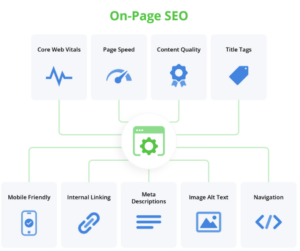
On-page SEO involves all of the on-site techniques one would use to ensure a high search engine ranking of their site. This type of SEO is a combination of content and technical skills to improve the overall quality of the page. In short, the more on-page search engine optimization you do, you’ll likely get more traffic to your site and improve your search engine results page (SERP) that displays and ranks your page when users enter search queries into search engines. This topic may sound foreign, but if you are at all familiar with SEO, then all on-page SEO refers to is the application of common day practices of SEO, such as content creation, link-building, keyword research, and much more. If you are not familiar with the aforementioned terms, I’d recommend taking the time to read the following blog as it will solidify your understanding of SEO in general and help you better understand the application of on-page and off-page SEO.
When would we want to emphasize the practice of on-page SEO? On-page SEO aims to increase the overall health of your webpage to improve online traffic and visibility; thus, similar to the overall goal of SEO in general, similarly, on-page optimization is utilized as a means to improve the online presence of and engagement with a web page. Now, how does this all relate to local SEO in specific? Well, just as on-page optimization improves the general SEO of a webpage, on-page optimization can have the same effect on local SEO. By tailoring on-page elements of SEO to a specific geographic location, one will attract users and customers within that geographic circumference and improve their local business. Moreover, think about on-page optimization for local SEO as an additional step past “general” SEO. This is because elements on the page, such as content, links, page titles, meta descriptions, and more need to be tailored to the specific locality of said business.
Understanding Off-Page SEO:
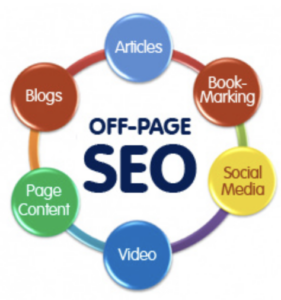
Next up, off-page SEO. Off-page SEO is anything you do outside of your website in an effort to improve search engine rankings. A main element of off-page SEO that will be referenced to a few times in this blog is link-building. In short, link-building is the process of acquiring links from other websites that link back to your own. Link-building is a way of increasing your site’s reach by exposing it to a wider audience. Furthemore, the more places one can access your website from, the greater the likelihood of visibility. Also, Google will view such links like endorsements, as if each one is a vote of confidence from a potential customer, which directly leads to higher rankings in search and therefore greater exposure and presence. In addition, off-page SEO helps to establish website authority via reputable backlinks as this signals to search engines that the website is trustworthy. A trustworthy website will rank much higher in search engine results than an untrustworthy website. This has positive and far reaching impacts for local businesses by helping them appear more often and at a higher level on search results.
In the case of off-page optimization, local SEO can actually be used as a strategy in improving off-page optimization that is also beneficial to your business’s overall local SEO. By adding your business site to local listings and internet directories, such as Yelp, Google My Business, and so on, your site is more likely to appear in local search results because of the backlinks attached to such listings and directories. An important note to make when link-building and backlinking, make sure that your business information (name, address, phone number, hours of operation) are consistent across all platforms in an effort to develop consistency and trust among users.
Concluding Insights: On-Page vs. Off-Page SEO
An additional note I’d like to make about the differences between the two is that of control. While both types of SEO serve their own purpose and are equally beneficial, on-page optimization allows for a lot more control as you are the one in charge of optimizing and modifying your webpage. Off-page optimization, on the other hand, lacks a sense of control because to a certain extent you are at the whim of others deciding to link-build with you. Do not get me wrong, there are most definitely ways to improve and even secure a certain level of off-page optimization, but not to the same degree as on-page optimization. I’d say that may be the starkest contrast between the two. In addition, please make note that while each type of SEO serves their own purpose at differing times, a combination of both on-page and off-page SEO are essential to a comprehensive and successful search engine optimization strategy.
Position Your Business on the Local Map: A Comprehensive Guide to Keyword Research as a Local Business
Picture this: you’ve finally opened the doors to your new local business. It has been a long-awaited opening and neighbors and nearby businesses are all eager for the services and goods your company has to offer. Despite the heartwarming support from the neighborhood, it translates into only a minimal influx of customers. You find yourself in need of a solution. Enter, keyword research! You may be asking yourself what in the world that means. It means your golden ticket to customer acquisition! In this blog, we will cover the basics of keyword research and how utilizing and capitalizing on keyword research will help your local business attract new customers and expand past what you thought was possible. In short, if you’re looking to attract new customers and more business through online marketing, this blog is for you!
The Basics of Keyword Research: What is it & How Does it Work?
Before jumping straight into things, let us get up to speed on exactly what keyword research is. Keyword research is the process of looking at what users are searching for and then analyzing how exactly they search for it on the internet1. Thus, this type of research is key to helping us understand the types of things people are searching for, as well as the words they are using. Keyword research is all about the “what” and the “how.” For example, if I am in need of a new computer for work, then my “what” can be identified as a computer. The next step is my “how”–how am I going to find the appropriate computer I need? Well, I would search the internet and ask Google or any other search engine what the best working laptop is. In this example, some keywords I would enter into the search engine that would produce the results I want may include the following: business computer, professional laptop, office PC, etc. If I wanted to make my search more specific and localize my search to work computers in my area, I might add the words “near me” or my city name after my main keywords. Now, in relation to one’s local business, if I know that my target audience are single-moms, for example, and my product for sale is easy-to-use strollers, I want to tailor the keywords on my website accordingly to attract their business based on their presumed search queries. For this scenario, I would consider incorporating phrases such as “single mom-friendly strollers” or “user-friendly strollers for busy moms” to resonate better with my intended audience. Moreover, incorporating location-based keywords such as “best strollers for single moms in [city name]” can further localize the search and attract customers from your immediate vicinity. This is all done using keyword research! Keyword research allows us to see all the different ways that people find products like “easy-to-use strollers.” This insight provides us with the subsequent knowledge to adjust our website and marketing keywords to align with those search queries. Ultimately, keyword research has the ability to improve all aspects of your online marketing efforts, including search engine optimization (SEO), pay per click, mobile, local, and social media2, all with the aim of increasing business.
All of this begs the question: how do I actually go about keyword research and understanding the data I need to improve my online marketing? Keyword research is really about trial and error; however, there are several useful tips and strategies that can save you from a lot of wasted time and resources.
First and foremost, you need to have good knowledge of the industry you are working in. Only then can you focus on keyword research tools. The foundational industry knowledge you possess will serve as a guide to navigating keyword research effectively. Utilize this knowledge and the needs of your target audience as a starting point for keyword research. Put yourself in the shoes of your customer–what would they type into Google to see what you offer? This brainstorming process will produce what are referred to as “seed” keywords. Seed keywords are the starting point to keyword research. This is because every keyword research tool will ask you to enter a seed keyword in order to generate a list of keyword ideas. For example, if you sell running shoes, your seed keywords may include athletic footwear, sneakers, and running shoes. You should be able to pinpoint a few seed keywords rather quickly as often they are the most obvious words associated with your product.
Next, you will begin to plug in some of your seed keywords into a keyword research tool. One great keyword research tool can be found on Ahref’s website. Google Keyword Planner is another well-known research keyword tool that is both free and somewhat user-friendly. You will be overwhelmed by the amount of results that appear; however, the data is very simple to understand. Next to each keyword will be additional data about that specific keyword, such as its volume of use. This can be a great way to gain a better understanding of the keywords that are performing well.
Furthermore, there are various additional means one can utilize for keyword research apart from online tools. Effective keyword research also includes browsing industry forums, looking at competitors and their keywords, as well as understanding your target audience. As an expert in your industry, leverage the expert knowledge you possess as it might lead you to original and new keywords. Another strategy as noted above is to identify and then observe your competitors. Look to see what keywords are driving in traffic to your competitors’ websites, and also look to see what keywords are not performing well. This is a great way to save yourself a lot of time and see what is and what isn’t already working. Moreover, choosing the right keywords for your website is a crucial step, but your job does not stop there. Next, you will want to ensure that such keywords are ubiquitous and consistent throughout your other forms of media and marketing, such as in blogs, on Facebook, LinkedIn, and other types of media and marketing. Doing so will help you establish keyword relevance and recognition for your web content.
We have previously mentioned seed keywords, but there are many other types of keywords. So not to overwhelm the reader, I will provide what I think to be the two most notable types of keywords as followed:
- Short-tail keywords
- Long-tail keywords
Short-tail keywords, also referred to as head terms, are keywords that refer to very broad and general topics. These keywords often have a high search volume, which means a lot of competition. Long-tail keywords, on the other hand, are much more specific and niche-oriented keywords that often receive much less traffic and therefore can be harder to rate highly. These keywords are much less competitive and have the aim of attracting visitors with a specific need. A great example of the difference between the two is provided by Ahref as that of a furniture store. A short-tail keyword for this topic would simply be furniture store; however, an example of a long-tail keyword for this topic may be vintage office furniture. They both have their pros and cons, but a comprehensive and effective approach to keyword research will target both short-tail and long-tail keywords.
Keyword Research and its Application to Local Search Engine Optimization (SEO)
Referred to as local SEO, local SEO is the process of optimizing your online presence to increase visibility within a particularly geographic area. Keyword research is essential for local SEO because it helps businesses attract relevant local traffic, improve their visibility in local search results, and ultimately drive more leads and sales from their target audience.
Recent studies have shown the importance of keyword research and SEO for consumer attraction, which necessitates a strategic and holistic approach to SEO–within that the need for keyword research4. More so, most peer-reviewed literature on the topic points to the identification of strong keywords and trends as highly optimal for achieving a good ranking on search engines4. How does this all relate to your local business you might be asking yourself? Well, we touched a bit upon localized keyword research previously; however, in addition to what was previously noted, it must be understood that specifically local SEO keyword research is the process of finding keywords people search for when looking for services and goods within their geographic location. This type of keyword research tells you exactly what your target customers are looking for, and if you are a local business, then this type of data will be valuable to you.
As a local business, the optimization of your keywords will help increase your organic visibility, making it easier for customers to find your business. Incorporating location-specific words, such as city names and neighborhoods, into your content will help you attract business from local customers who are searching for services within their area. Also, keyword research is a great way for local businesses to differentiate themselves from their competitors. Such insight will allow you to identify new opportunities within your business and stand apart from the rest. Overall, keyword research is crucial to effective local SEO as it helps to drive local traffic, improve business visibility online, and ultimately lead to more business.
It must be understood that keyword research is the intersection between a consumer looking for products, services, or content and the product, service, or content you have to offer. The better you understand the world of keywords and searcher intent, the more opportunities you will have to connect with consumers and expand into new markets5.
Without a strategy, you will become lost in the depths of random web pages and your website will be just one of millions. By conducting thorough keyword research as a local business, you can identify the terms and phrases that resonate most with your target audience and optimize your website content accordingly. This not only improves your organic visibility in search engine results but also enhances your chances of connecting with local consumers who are actively seeking what you have to offer. In essence, a well-executed keyword strategy is essential for maximizing your online presence locally, driving targeted traffic to your website, and ultimately achieving your business objectives.
How to Complete an SEO Audit in 10 Simple Steps

Today’s blog will cover how to conduct a Search Engine Optimization (SEO) audit in 2024 in only 10 simple steps. Let’s dive right in!
To begin, an SEO audit can be defined as a comprehensive evaluation of a website’s performance in search engine results. The process of an audit evaluates various aspects of a website that impact its performance in organic search or SEO. An SEO audit is important because it identifies any issues a site has with its SEO so one can properly address and correct the issue. If you want to get higher Google rankings, then you’ve come to the right place. I’d like to note that I cannot take full credit for the following. There are dozens of SEO audit checklists online and the following steps are an accumulation of what I think to be the most necessary and useful steps to completing a comprehensive and successful audit.
Please note, eventually there will be the need for tools to compute and analyze data. There are various tools one could use to help conduct an SEO audit; however, there are also many free and publicly available tools for use, such as Ahrefs Webmaster Tool, Google Search Console, and Google Analytics to name a few. While audit processes differ from person to person and job to job, there is a basic framework that is applicable to all. Here’s how to conduct your own SEO audit in 10 simple steps:
Summary Overview:
Step #1: Run a Crawl of Your Website (Using AWT)
Step #2: Check Your Organic Traffic & Identify Drops
Step #3: Check For Website Duplicates
Step #4: Find and Fix Indexing Issues
Step #5: Check to See if Your Site is Mobile-Friendly
Step #6: Fix Broken Links
Step #7: Ensure Proper On-Page SEO Practices
Step #8: Identify Declining Content
Step #9: Set Up Keyword Rank Tracking
Step #10: Optimize Your Website Architecture
Step #1: Run a Crawl of Your Website (Using AWT)
 Beginning an SEO audit can be somewhat intimidating. It’s also possible that given all the information, you may not know where to begin. A great place to start when conducting an audit is by running a “crawl” of your website using Ahrefs Webmaster Tool (AWT) as noted previously. This is referred to as a “crawl” because a software employs what are referred to as crawling bots to scan and analyze your website. Once your audit is complete, Ahrefs may identify dozens of issues. This complete audit by Ahrefs can give you a great place to begin your own audit if you are not sure where to start. On the other hand, sometimes the amount of issues that appear from a software-conducted audit can be overwhelming for those with limited experience. If that is the case, continue down and follow the upcoming steps for your SEO audit and circle back to step 1 if and when you are able.
Beginning an SEO audit can be somewhat intimidating. It’s also possible that given all the information, you may not know where to begin. A great place to start when conducting an audit is by running a “crawl” of your website using Ahrefs Webmaster Tool (AWT) as noted previously. This is referred to as a “crawl” because a software employs what are referred to as crawling bots to scan and analyze your website. Once your audit is complete, Ahrefs may identify dozens of issues. This complete audit by Ahrefs can give you a great place to begin your own audit if you are not sure where to start. On the other hand, sometimes the amount of issues that appear from a software-conducted audit can be overwhelming for those with limited experience. If that is the case, continue down and follow the upcoming steps for your SEO audit and circle back to step 1 if and when you are able.
Step #2: Check Your Organic Traffic & Identify Drops
 A crucial step in conducting an SEO audit is checking on your organic traffic, and if there are drops in your traffic, you need to identify their cause. Often, drops in organic traffic can be due to changes in Google’s algorithm. Google is constantly updating their search algorithms and very rarely will notify users of such updates; therefore, steps like this are essential to ensuring you are up to date with all of Google’s updates. Another common reason for drops in organic traffic may be due to manual action. Manual action, or Google Penalty, is action taken against a website by a human reviewer. Manual actions can result in demotions and they may be the reason for decreased or stagnant organic traffic. I should note that manual action is a pretty severe consequence that only really happens if something is drastically wrong, but it is always good to check to make sure that it was not the issue. To observe your organic traffic data, you can utilize Google Analytics to see how much traffic your site is receiving. Once completed, you can plug your site URL in Ahref’s Site Explorer to see new Google updates and when they occurred. You can then check to see if the drop in your traffic and the Google updates align at all.
A crucial step in conducting an SEO audit is checking on your organic traffic, and if there are drops in your traffic, you need to identify their cause. Often, drops in organic traffic can be due to changes in Google’s algorithm. Google is constantly updating their search algorithms and very rarely will notify users of such updates; therefore, steps like this are essential to ensuring you are up to date with all of Google’s updates. Another common reason for drops in organic traffic may be due to manual action. Manual action, or Google Penalty, is action taken against a website by a human reviewer. Manual actions can result in demotions and they may be the reason for decreased or stagnant organic traffic. I should note that manual action is a pretty severe consequence that only really happens if something is drastically wrong, but it is always good to check to make sure that it was not the issue. To observe your organic traffic data, you can utilize Google Analytics to see how much traffic your site is receiving. Once completed, you can plug your site URL in Ahref’s Site Explorer to see new Google updates and when they occurred. You can then check to see if the drop in your traffic and the Google updates align at all.
Step #3: Check for Website Duplicates

Believe it or not, you may have different versions of your website indexed by Google. Visitors should only be able to access your site from one link and one link only. If your website link is accessible from more than one link or from an unsecure link, there is most definitely an issue that needs to be corrected. Google will actually see multiple links to one site as different sites all together. In extreme cases, this issue may even negatively impact your Google ranking.
Step #4: Find and Fix Indexing Issues
For this step, Google Search Console will be a great tool to find web pages that Google is not indexing. What does that mean exactly? Well, google search results come from one large index, which is a large database of countless web pages. Your website page needs to be in this index to have any chance of ranking. Indexing issues can become a bit complicated. If an error pops up on Google Search Console, you can get more information and see if that issue is related to indexing. If so, you will have to remove or edit the meta robots tag–this is where it can get a bit complicated.
Step #5: Check to See if Your Site is Mobile-Friendly
 Most people do anything and everything from their phone nowadays, which includes Google searches. In fact, over 60% of searches now come from phones3. Thus, it is important that your site is mobile-friendly as well. What do I mean by that? Well, your site needs to read just as easily on a tiny phone screen as on a computer screen, as well as being just as easily navigable. This has actually been a Google ranking factor since 2019, meaning Google will actually demote your website if it is not mobile-friendly! Google has a free Mobile Friendly Test Tool that you can insert your URL into and the tool will confirm if your site is mobile-friendly or not. If not, make the necessary changes.
Most people do anything and everything from their phone nowadays, which includes Google searches. In fact, over 60% of searches now come from phones3. Thus, it is important that your site is mobile-friendly as well. What do I mean by that? Well, your site needs to read just as easily on a tiny phone screen as on a computer screen, as well as being just as easily navigable. This has actually been a Google ranking factor since 2019, meaning Google will actually demote your website if it is not mobile-friendly! Google has a free Mobile Friendly Test Tool that you can insert your URL into and the tool will confirm if your site is mobile-friendly or not. If not, make the necessary changes.
Step #6: Fix Broken Pages
Having broken pages on your site is never a good thing. Worse, if these broken pages have backlinks, then they are simply a waste of a link leading to nothing. No one wants to open a link and receive a 404 error message. Broken pages lead to a negative customer experience and can hurt your SEO. If the broken page does contain backlinks, redirect or update the link. If the broken page was accidentally deleted, reinstate it. Once identified, broken pages are quick and easy to fix.
One way to discover broken pages is by visiting Google Search Console under Google’s Index report. If your pages are broken, you will receive a 404 error when entering the URL into the system. In Site Explorer, you can also identify broken URLs that have backlinks. Simply enter your domain, navigate to the “Best by links” report, and apply a “404 not found” filter. Then, arrange the report by referring to domains in descending order.
Step #7: Ensure Proper On-Page SEO Practices
 Every indexable page on your website needs to have the following on-page data: title tag, meta description, and H1 tag. In this step, a tool such as Site Audit is necessary. The software will deliver you a report stating if you have any of the necessary on-page information missing. This step can be a bit complicated as depending on their size, certain issues within this step may mean an error within the coding of the website, which calls for a much larger solution.
Every indexable page on your website needs to have the following on-page data: title tag, meta description, and H1 tag. In this step, a tool such as Site Audit is necessary. The software will deliver you a report stating if you have any of the necessary on-page information missing. This step can be a bit complicated as depending on their size, certain issues within this step may mean an error within the coding of the website, which calls for a much larger solution.
Step #8: Identify Declining Content
Unfortunately, content, no matter how great it is, will not last forever. Eventually you will have to update and improve upon your existing content. Part of good SEO practices, so to speak, is to constantly monitor your content to ensure optimal performance. Once content becomes old or outdated, traffic slows naturally, but good news! Usually a quick face-lift will resurrect rankings. Google Search Console offers a quick and easy way to view your traffic history. This tool can show you your last 6 months of traffic ratings and where you may need to improve.
Step #9: Set Up Keyword Rank Tracking
![]()
Setting up some sort of system to track your keyword rank can prove very useful. One step further than that is actually tracking the keyword rank of your competitors. There may be high-ranking keywords your competitors use that you don’t–this can be referred to as a content gap. A great way to find this out is through Site Explorer. Paste your URL into Site Explorer and navigate to the content gap selection. Proceed to paste the URL of your competitor into the following open bar and then press keywords. You’ll then see a clear depiction of your keywords versus theirs, as well as the ranking of each. This is an excellent tool to improve your keyword ranking.
Step #10: Optimize Your Website Architecture
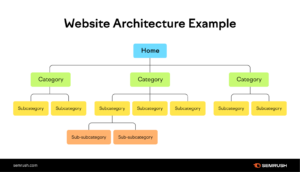
In essence, your site should please two different parties: Google and the intended audience. Thus, if you make information difficult for Google or your users to find and/or understand, Google will punish you by demoting your ranking. Therefore, check that your website architecture and structure is optimal–this is a key factor that will most definitely affect your SEO. See the photo example above of website architecture from SEMRush.
I’d like to emphasize the importance of working smarter, not harder, when conducting an SEO audit. I know that some of the aforementioned tools can be tricky to navigate but they offer a world of knowledge. A lot of these tools will identify all of the issues for you! Use that to your advantage so that you can spend more time actually fixing the issues than you do trying to find them. By leveraging the capabilities of these tools, you can streamline your audit process and maximize your productivity. Focus on prioritizing the most critical issues first, and utilize the insights provided by the tools to make informed decisions about where to allocate your time and resources. Ultimately, working smarter not only accelerates the audit process but also ensures that you can effectively address any issues that may be impacting your website’s performance in search engine results.
Mastering Local SEO: A Comprehensive Strategy Guide
Mastering Local SEO: A Comprehensive Strategy Guide

Attention all entrepreneurs and local business owners! Are you looking to transform your online presence and be the go-to choice for customers in your area? If so, look no further than local Search Engine Optimization (SEO). In this blog, get ready to immerse yourself in the dynamic world of local SEO, where we’ll explore every facet of this game-changing strategy.
Let’s walk through the different steps and tips necessary to master this transformative tactic to revolutionize your business’s online visibility and attract a steady stream of local customers. From optimizing your keywords and marketing to crafting compelling localized content, we’ll cover it all!
Step 1: Grasping the Concept
 First things first, a lack of comprehensive understanding of the concept itself is bound to put a damper on your revolutionary plans. So let’s make sure we all have a clear and concise understanding of the concept: Local SEO is the practice of optimizing a business’s online presence to improve its visibility in local search results.
First things first, a lack of comprehensive understanding of the concept itself is bound to put a damper on your revolutionary plans. So let’s make sure we all have a clear and concise understanding of the concept: Local SEO is the practice of optimizing a business’s online presence to improve its visibility in local search results.
While search results can come up on any search engine, SEO and local SEO focuses on the optimization of Google search results in specific. If you are familiar at all with SEO, you may be asking yourself how “regular” SEO and local SEO differ. The distinction is both simple and clear.
Local SEO is a more specific and narrowed type of search engine optimization that operates within a specific geographic setting, whereas regular SEO simply aims to improve online presence in general and is not specific to locality1.
Local SEO can appear as a search engine result through two different means: map pack results and blue ink results. While these terms may sound foreign, we encounter and use these two exact result types almost every day. The Google Map Pack, also referred to as the local pack, is a common feature in Google’s search engine results (SERP) that showcases a short list of the top local businesses relevant to the user’s search query or question. Be sure to visit our site here and learn more about the ever-evolving nature of Local SEO.
You can see an example of a Google map pack displayed below.
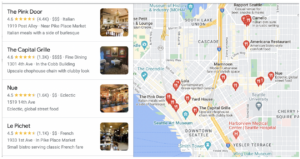
Appearing at the very top of Google search engine results, this is a typical search result we all receive when we search for goods or services “near me.” Google will present the user with a map interface that has map pinpoints correlating to highlighted businesses that match our search query, including the business name and location, their reviews, as well as their contact information.
This allows users to quickly find and identify where businesses are in relation to their location, as well as facilitate engagement with local businesses–a crucial feature in businesses trying to improve local search results and drive local traffic.
The other type of search result that will appear when searching on Google for local businesses is the regular, organic blue link, also known as “10 blue links.” The phrase “10 blue links” is an expression in the world of SEO used to refer to the traditional format of search engine results. These are the typical 10 blue links that we are used to seeing when plugging a query into Google.
While SERPs have evolved to include additional features like videos and pictures, the basic format of the 10 blue links remains the same. Google Map Pick and blue links are the most common way Google will facilitate an increased presence for local businesses.
Step 2: Understanding the Impact
Your efforts will only be as great as your ambition. Thus, properly understanding the intrinsic and profound impact local SEO will have on your business is a crucial step in propelling you and your business forward toward success.
The importance behind local SEO is short and simple, yet its significance should not be underestimated. Local SEO is an essential part of helping increase business visibility, making it easier for potential customers in the area to find your business. Additionally, the optimization of local keywords makes local businesses highly attractive to the intended audience.
While the main effect of local SEO is to increase the visibility and traffic of a business via their online marketing efforts, local SEO can be an advantageous tool in differentiating yourself from competitors.
Specifically, smaller local businesses are able to stand apart from large corporations. Furthermore, local SEO primarily generates what is commonly known as organic traffic. Organic traffic has been demonstrated to boast a significantly higher conversion rate compared to other marketing approaches, such as pay-per-click advertising. Essentially, when users come across a local business that addresses their needs, they are far more likely to convert into customers than with alternative marketing methods.
Also, the nature of local SEO practices ensure that business information is up-to-date and consistent among all online platforms, improving the customer experience. As mentioned earlier, it’s evident that local SEO offers significant advantages for brick-and-mortar businesses by attracting foot traffic, thereby boosting sales and overall revenue.
In short, any business that has a physical location or serves a geographic area can benefit greatly from local SEO. Enhancing your local SEO impacts the relevancy, prominence, and link popularity factors of your website within your specific geographic area.
By optimizing the appropriate elements of your site’s digital presence for local searches, your website can achieve higher rankings in a broader range of local search results.
Step 3: Preparing to Launch!
Local search engine optimization requires a thoughtful and holistic strategy to be effective, including content planning, market planning, web analytics, and business analytics2. This strategy should be developed as soon as possible as it has an effect on the entirety of site development, site content, architecture, as well as the content management system (CMS). Furthermore, there are many factors to take into consideration when developing a local SEO strategy, including the following:
- Revenue and business model: Think about the main purpose of your business. What is your end goal and is that communicated effectively to your audience? Are you selling products or services?
- Target audience: Who are your target customers? Who is trying to be reached? Age group, gender, or specific group? Are your products and/or services well marketed to the needs of your target audience?
- Competitors: One needs to be familiar with their competitive landscape, including knowing competitors and their digital marketing strategies. You may be able to leverage what is or is not working for your competitors and use it for your own strategy and SEO landscape.
- Content development: Putting out good, quality content plays a pivotal role in attracting new viewers to your website.
- Keyword Research: Understanding the needs of your target audience and how they search for those needs is a crucial step in developing your local SEO strategy. Does your website meet the search criteria of your target audience?
If you are delving into the world of local SEO, it is best that you get yourself acquainted with some of the above terms as you will hear them mentioned over and over again. More so, if you are able to answer the above noted questions, congratulations! You are now one step closer to developing and implementing your local SEO strategy.
Next in the development of your local SEO strategy is to take action! It can be overwhelming to begin, but to some extent, the only way you’re going to see progress is by starting.
The world of SEO is constantly changing so your local SEO strategy will inevitably be tweaked and changed, more than once. There are, however, some things you can look out for and work on integrating into your local SEO strategy to reduce potential errors. To foster trustworthiness and transparency, make sure that your Google My Business listing is updated regularly with all the necessary information (business name, address, hours of operation, contact information, etc.).3
Encourage customers to leave reviews on your site as another way to improve credibility. Your strategy should also include keyword research, optimizing the relevant local keywords to align with user search queries. I’d suggest reading more about keyword research as it should be a crucial part of your strategy, and effective keyword research can unlock immense potential for your business.
Moreover, utilizing tools such as link-building and optimizing localized content presents excellent methods for drawing organic traffic to your website. Localized content, including blog posts, articles, and event promotions, captures and engages the interest of customers.
Similarly, link-building fosters relationships with neighboring businesses, organizations, and influencers to secure backlinks, enhancing your website’s credibility and reliability. As noted previously, the world of SEO is constantly changing so continue to monitor and analyze your website performance to identify areas of needed improvement. A strong local SEO performance is crucial to driving local business and standing apart from competitors,and by default, a sound local SEO strategy is also needed.
Step 4: Implementing Tips & Tricks
The aforementioned may seem slightly overwhelming, so I’d like to emphasize and reemphasize a few tips and tricks that anyone without any prior SEO experience can do to improve the ranking and visibility of their local business.
Maybe you’re a local plumber, perhaps a family-owned flower shop or maybe you own a mobile pet cleaning service, whatever your business may be, these seemingly small tips can help anyone boost their local SEO performance.
This may seem like common sense but keep your information up to date and easily accessible. I cannot emphasize this enough. In today’s fast-paced world, people expect results immediately. If it takes a user more than 45 seconds to locate your business address, phone number, and operating hours, you risk losing their interest and potential business.
Therefore, it’s crucial to regularly update and maintain accurate information about your business–this is something everyone and anyone can do!
Another simple tip that anyone can implement is to actively encourage customers to leave reviews.
When customers do leave reviews, take the time to thoughtfully respond regardless if the feedback is positive or negative. Reviews are a great way to connect and build relationships with your current customers, as well as build trust with new customers. By asking customers to share their experiences, you can not only boost your credibility and reputation but also improve your visibility in local search results. Read more here about why reviews are so important for your business.
Moreover, as a local business, make an effort to build genuine relationships with other businesses in your area. One should not underestimate the power of word of mouth. It is a free and reliable way to market your business.
More so, you can ask surrounding businesses to link your website to their site so that it is exposed to a larger audience–and you can do the same for them! I should note, when it comes to link-building like this, being within the same industry usually bares the most effective results.
For instance, if you’re a plumber, forming a connection with a local hardware store can yield excellent results.
Do not be discouraged if you first fail. It takes professionals about 6 months to a year (if not more) to yield real results from local SEO practices just to give you a timeline idea. Remember, local SEO is an ongoing process that requires patience, consistency, and dedication, but the rewards of increased visibility, customer engagement, and business growth make it well worth the effort. So, take the first step today and start optimizing your local SEO!





